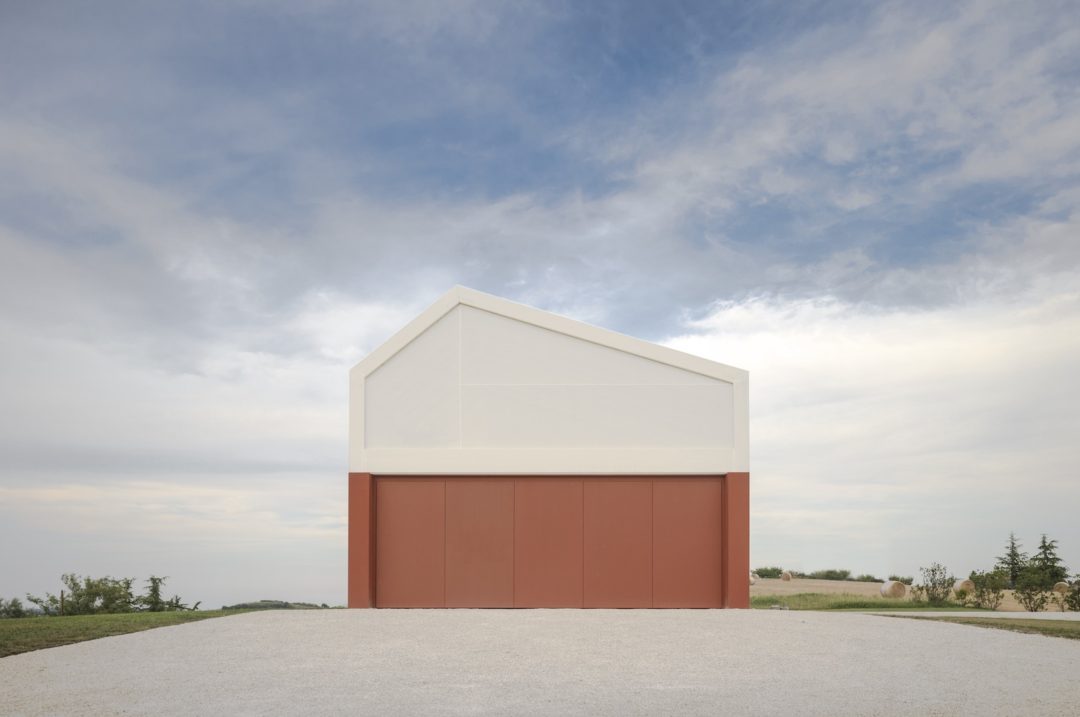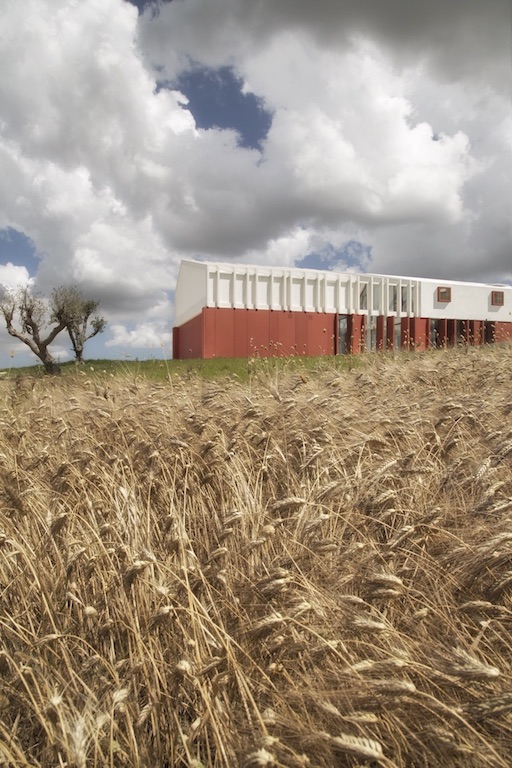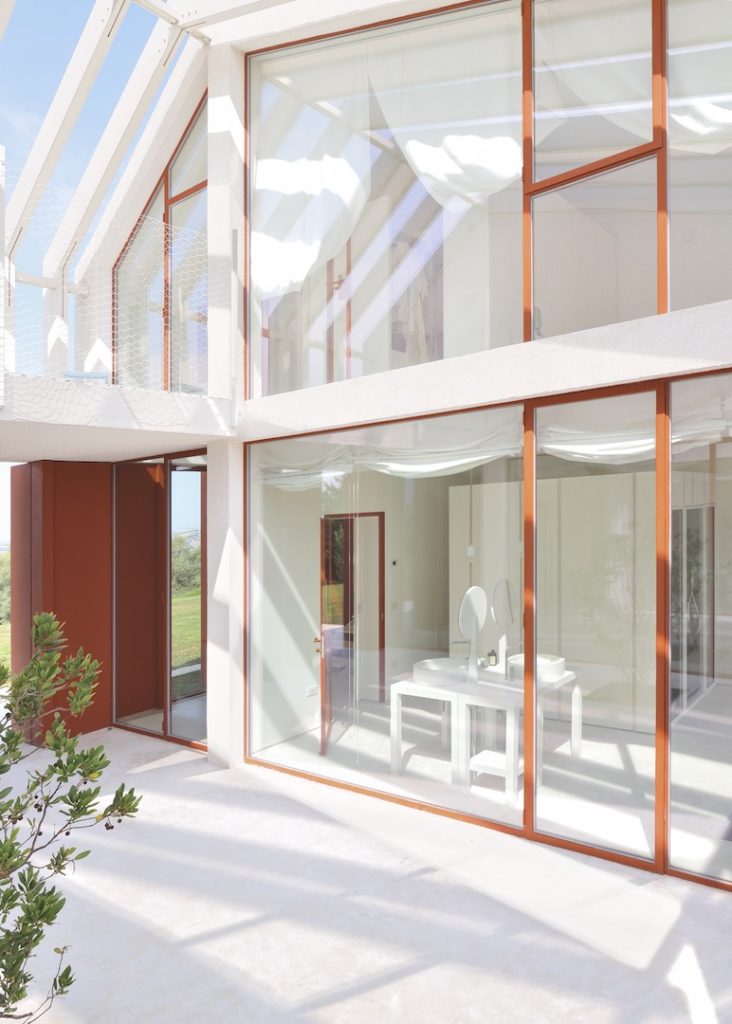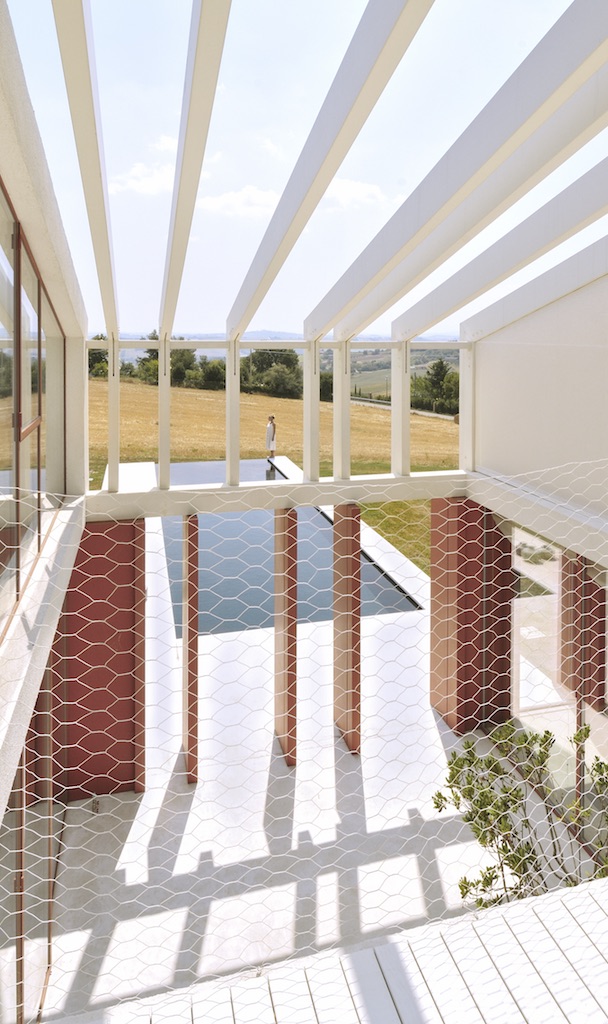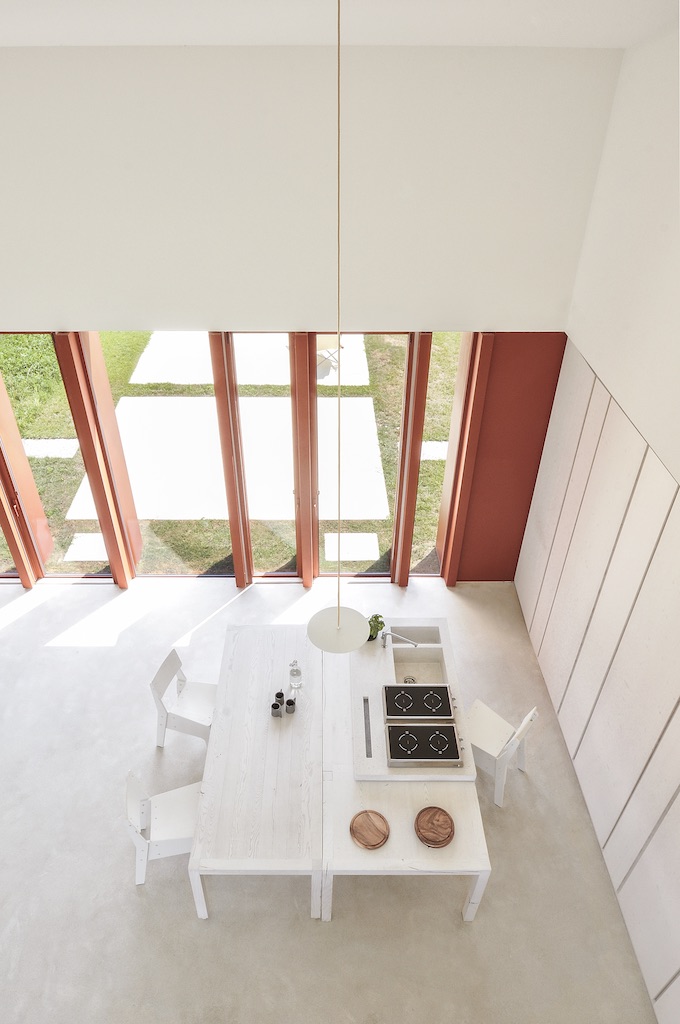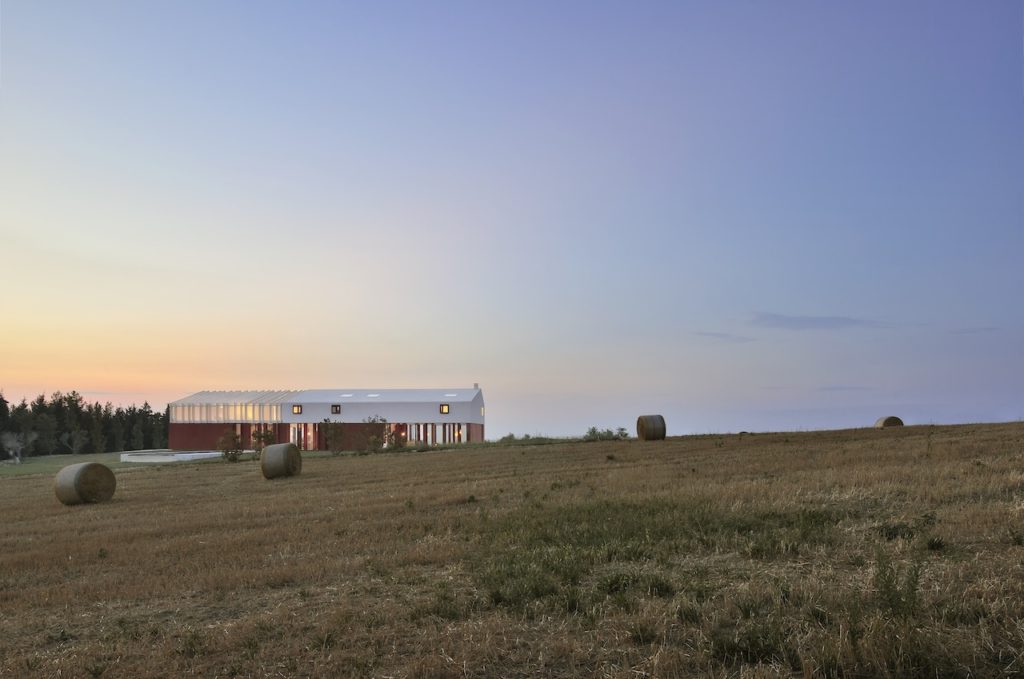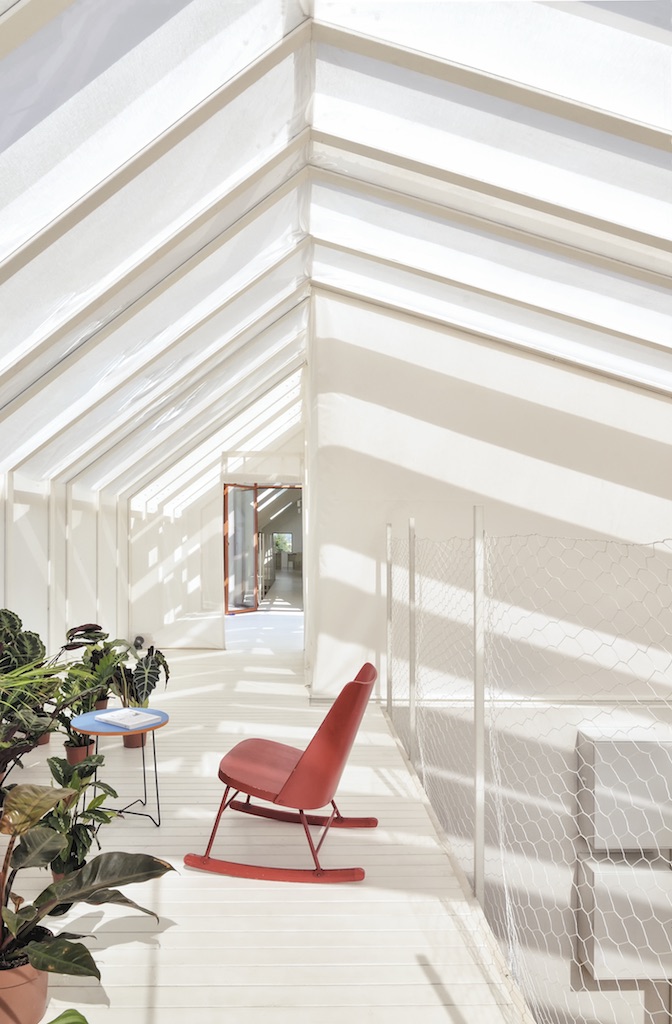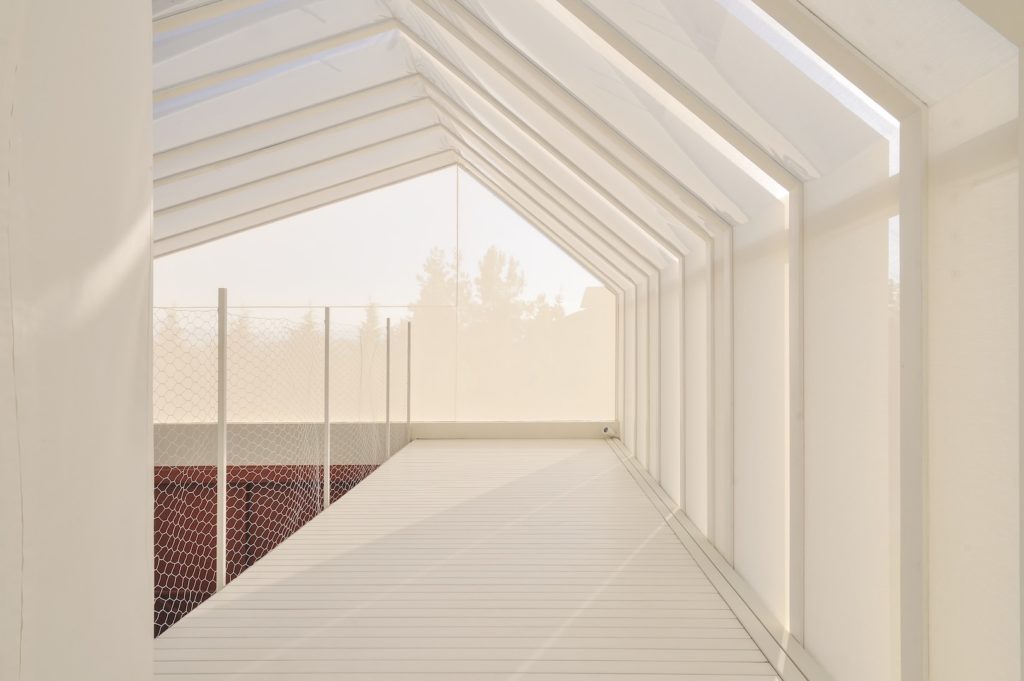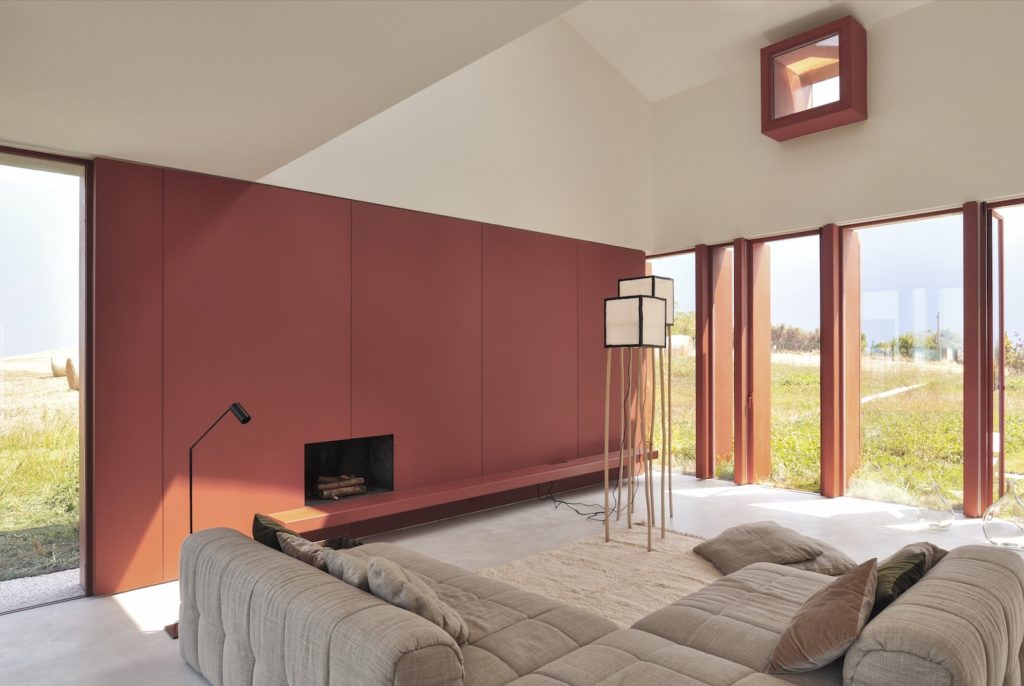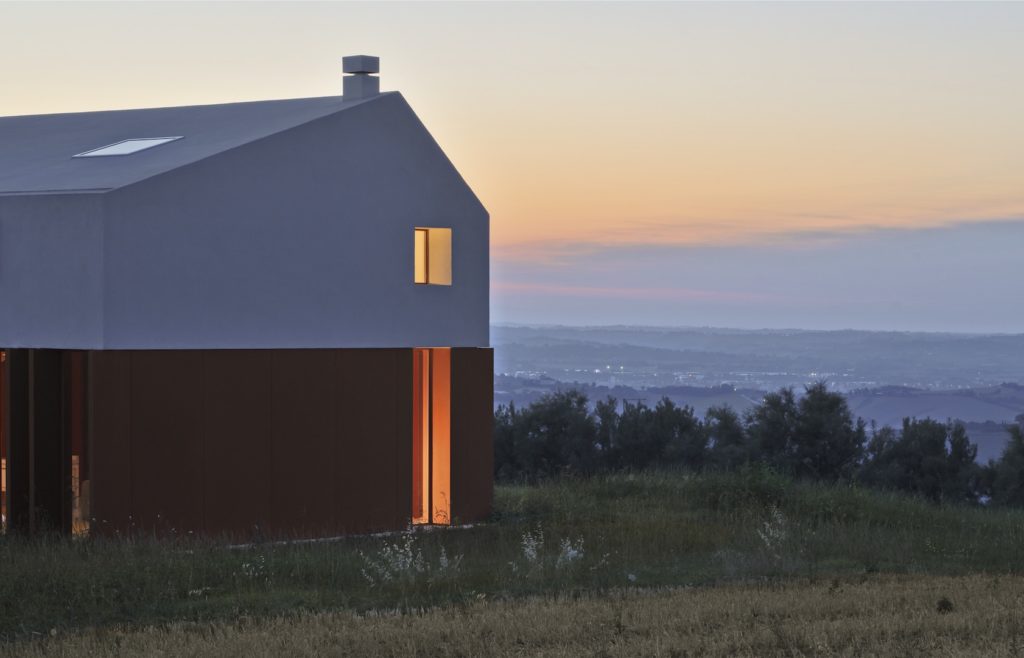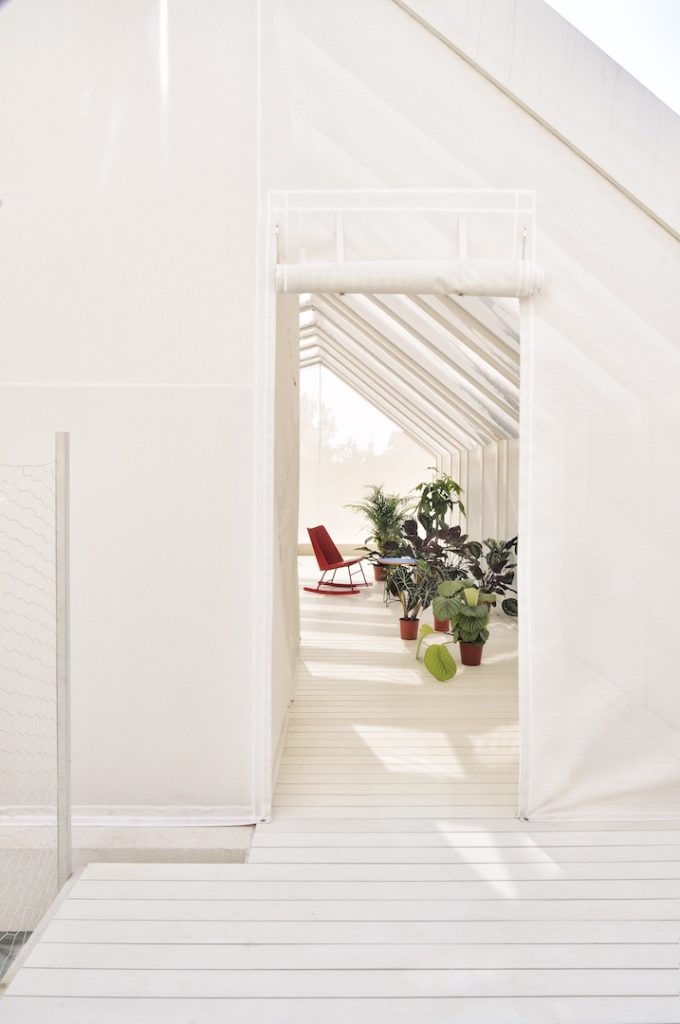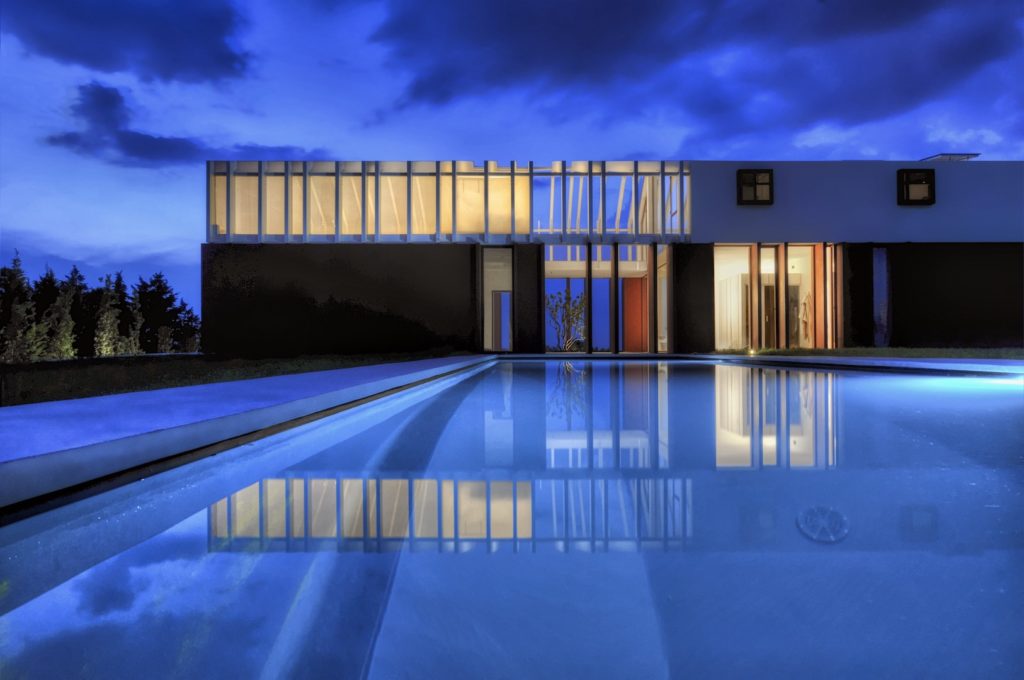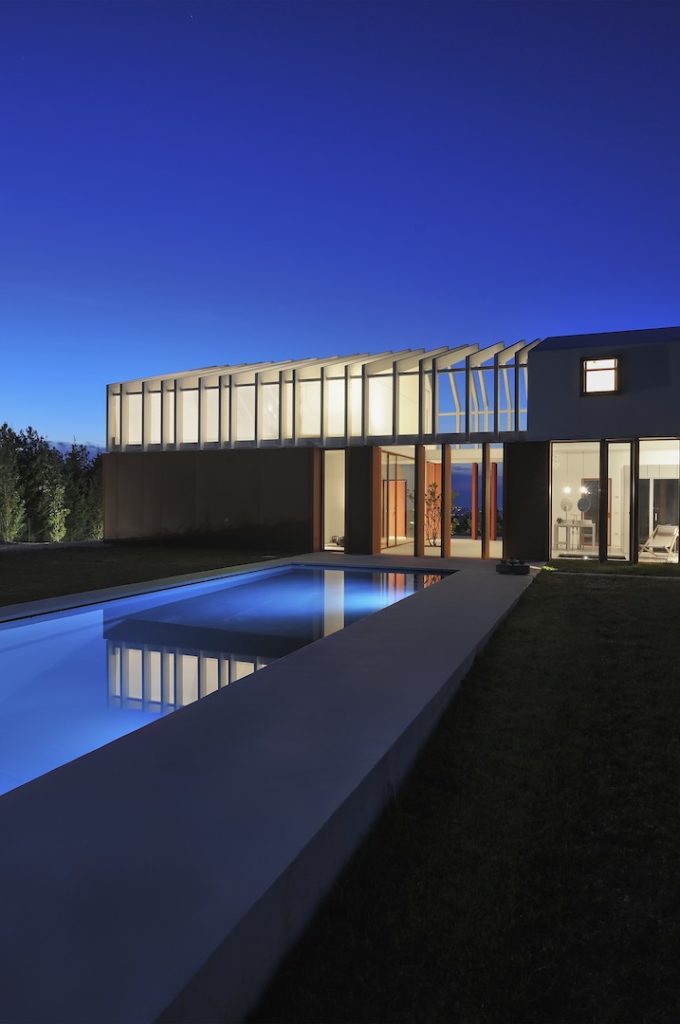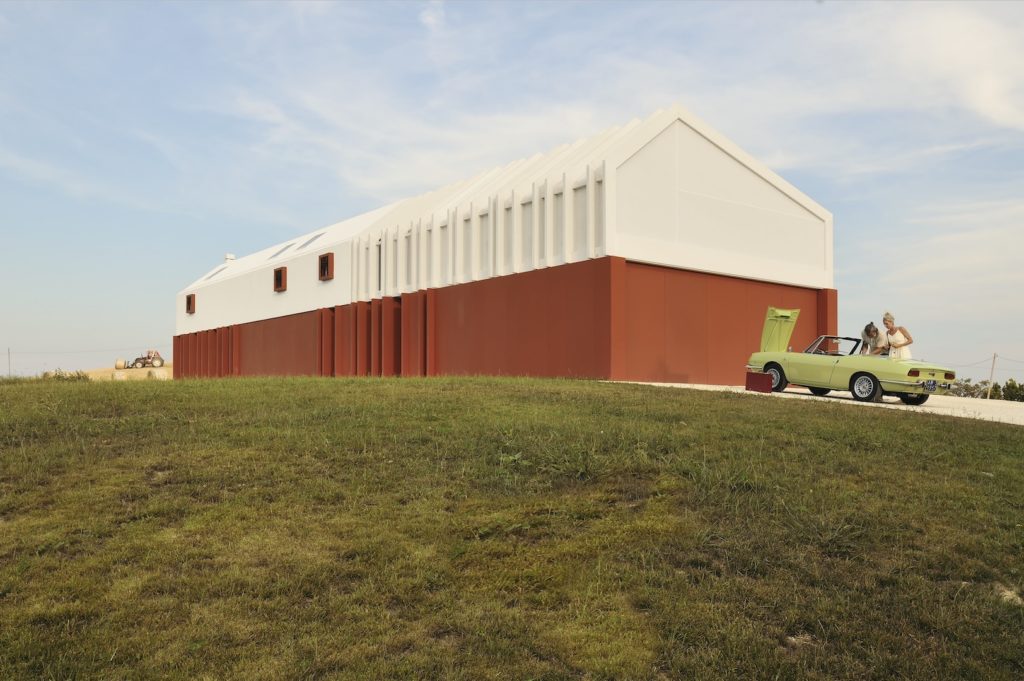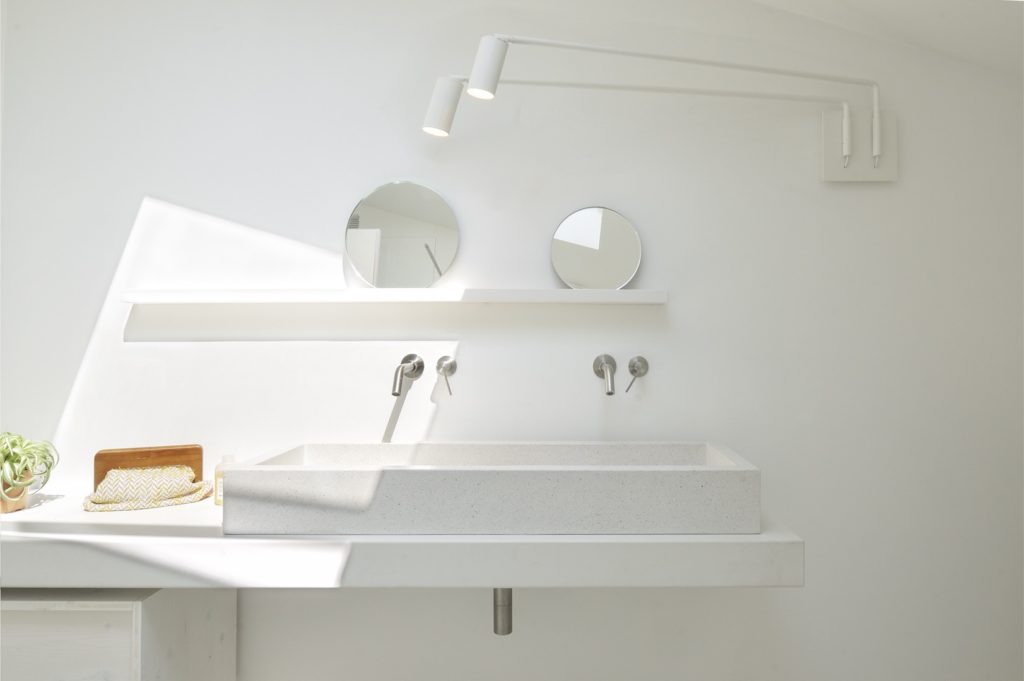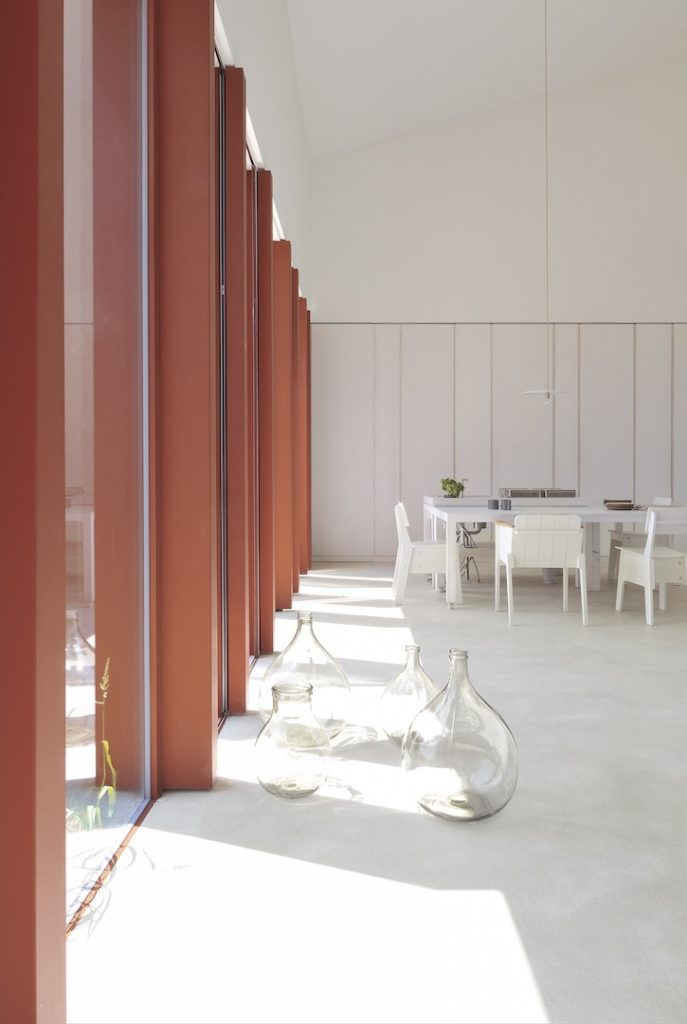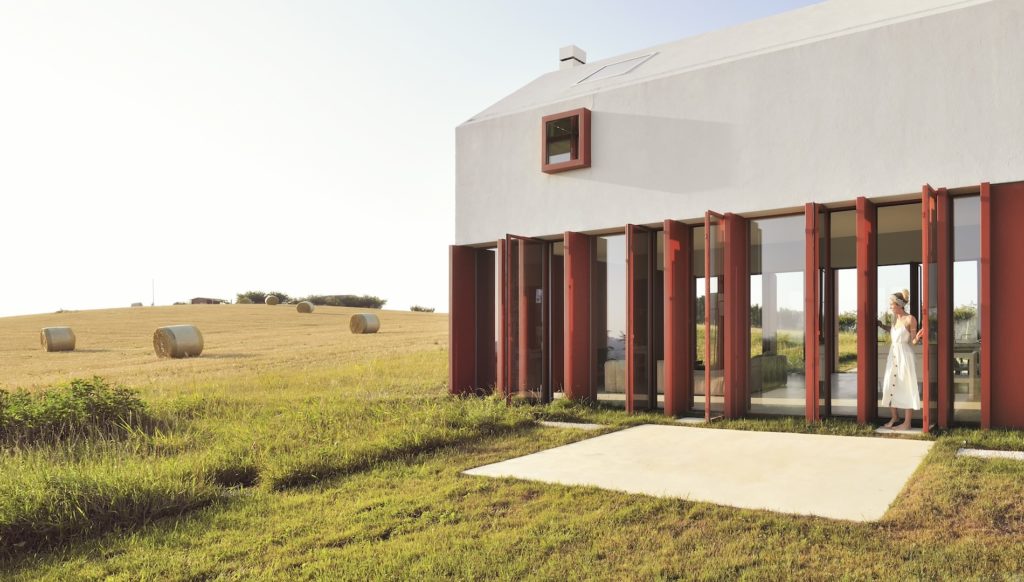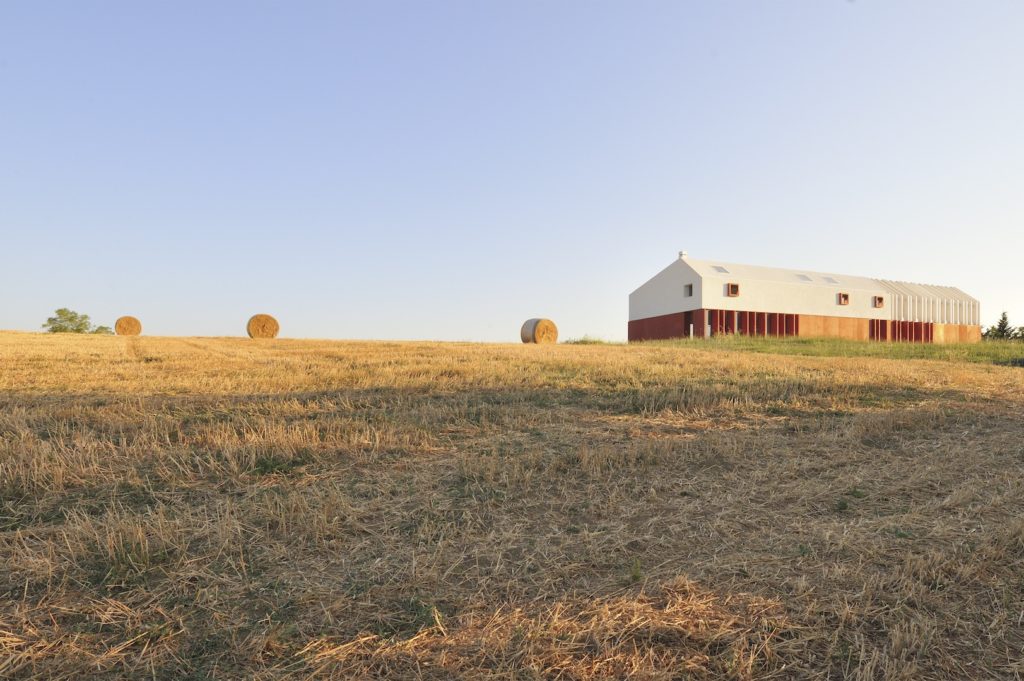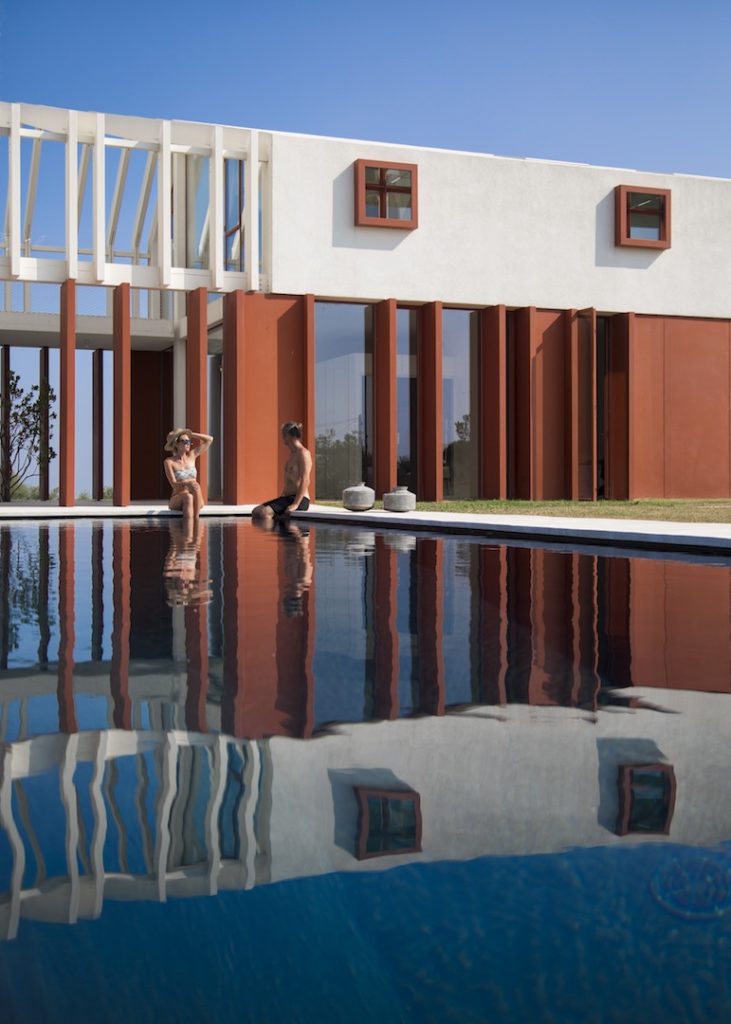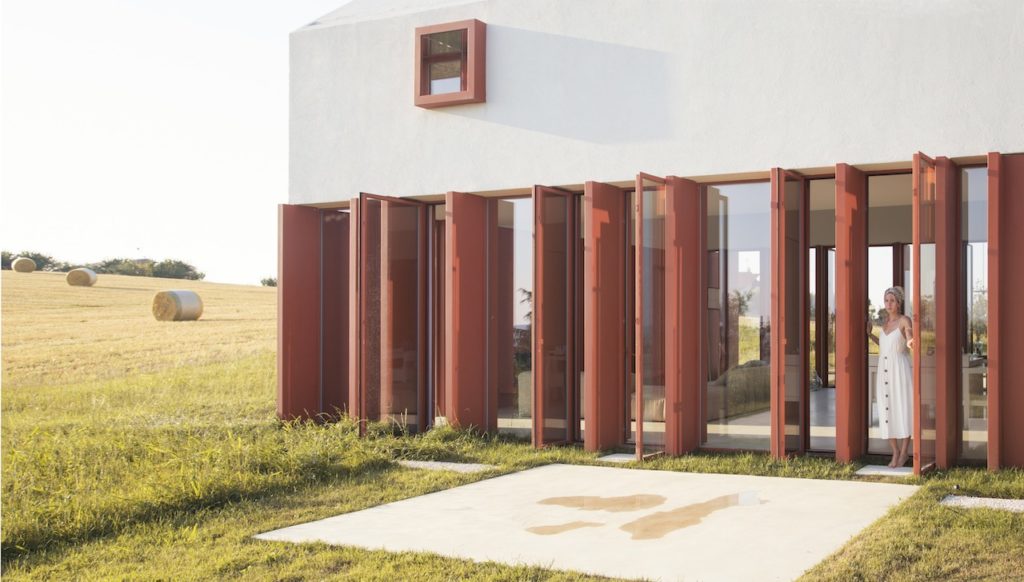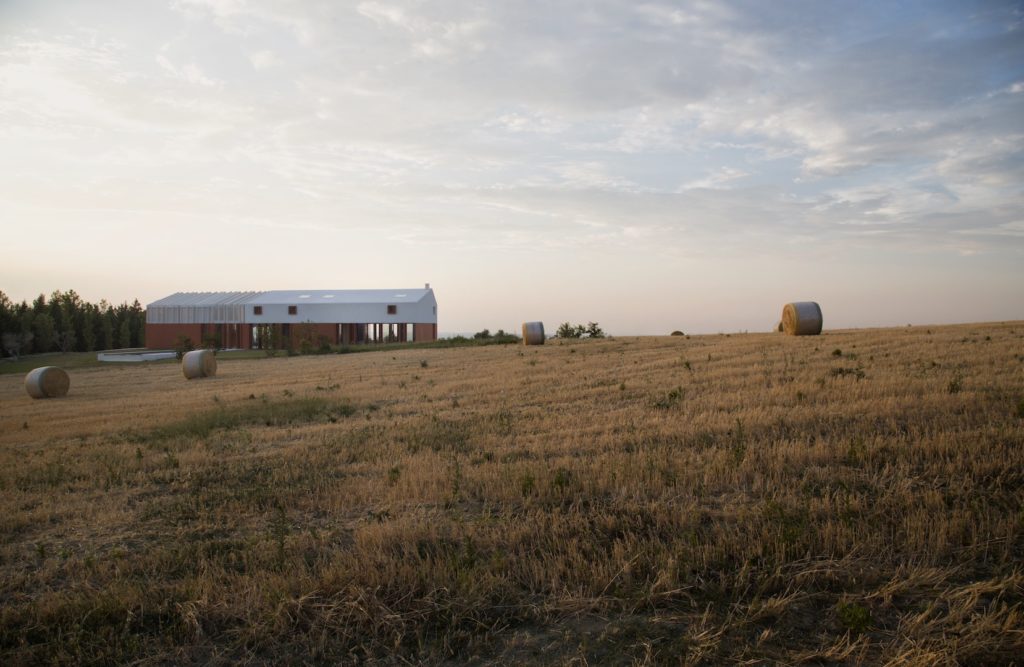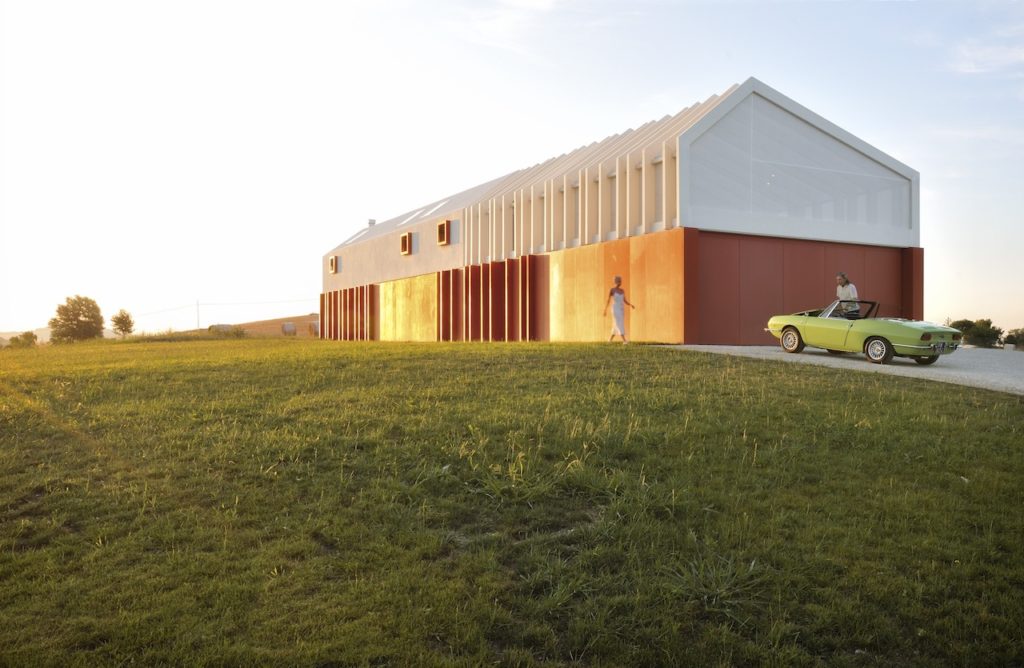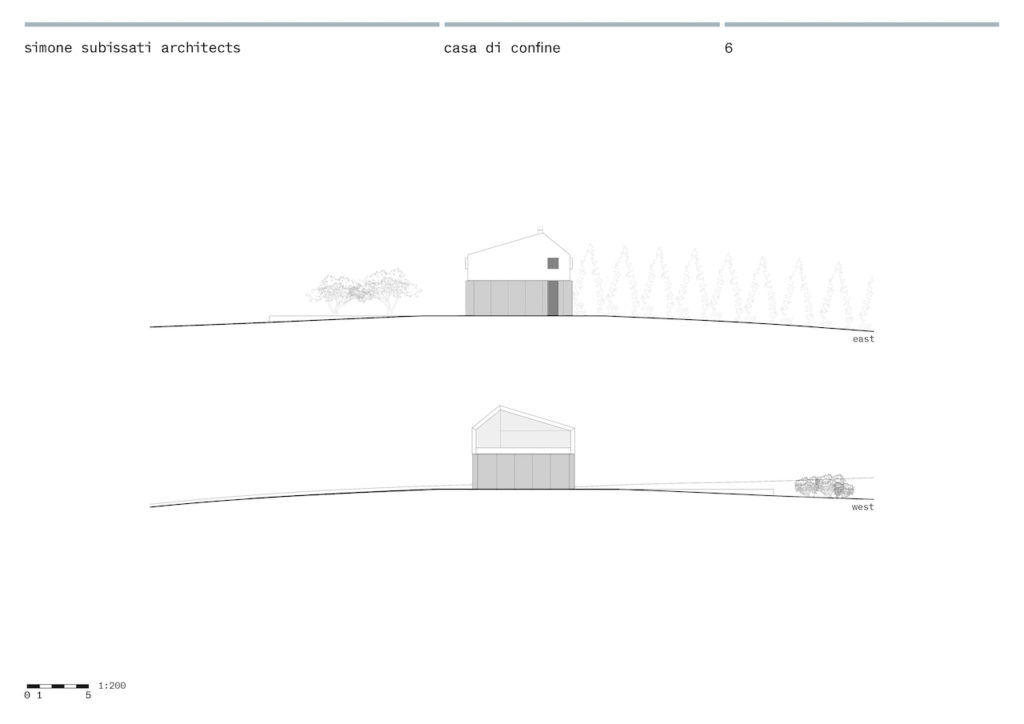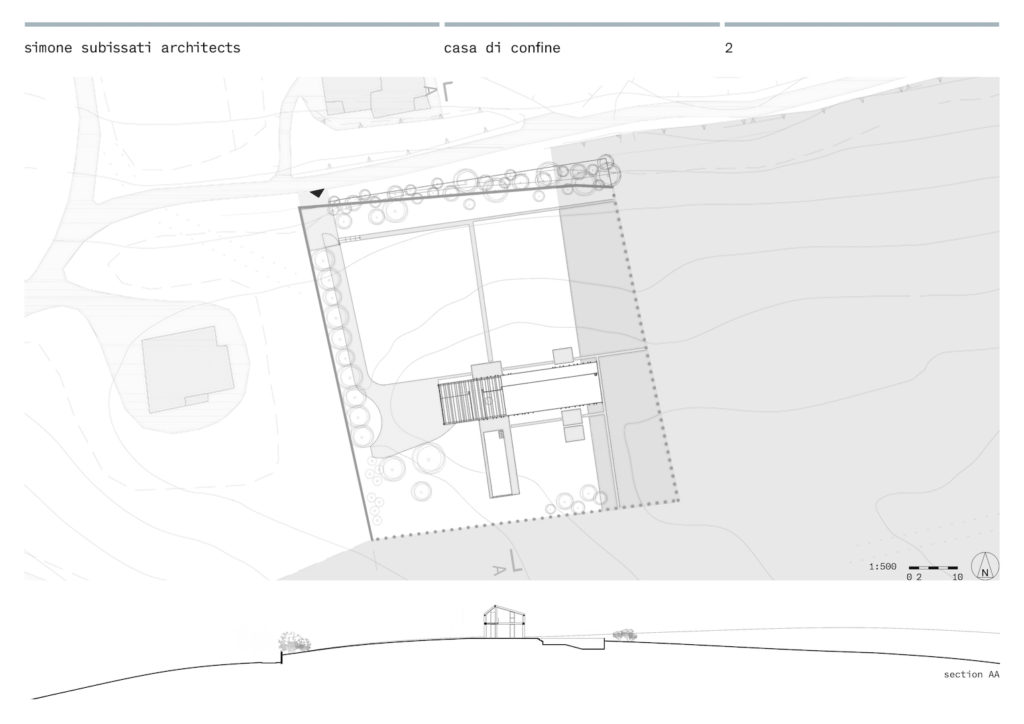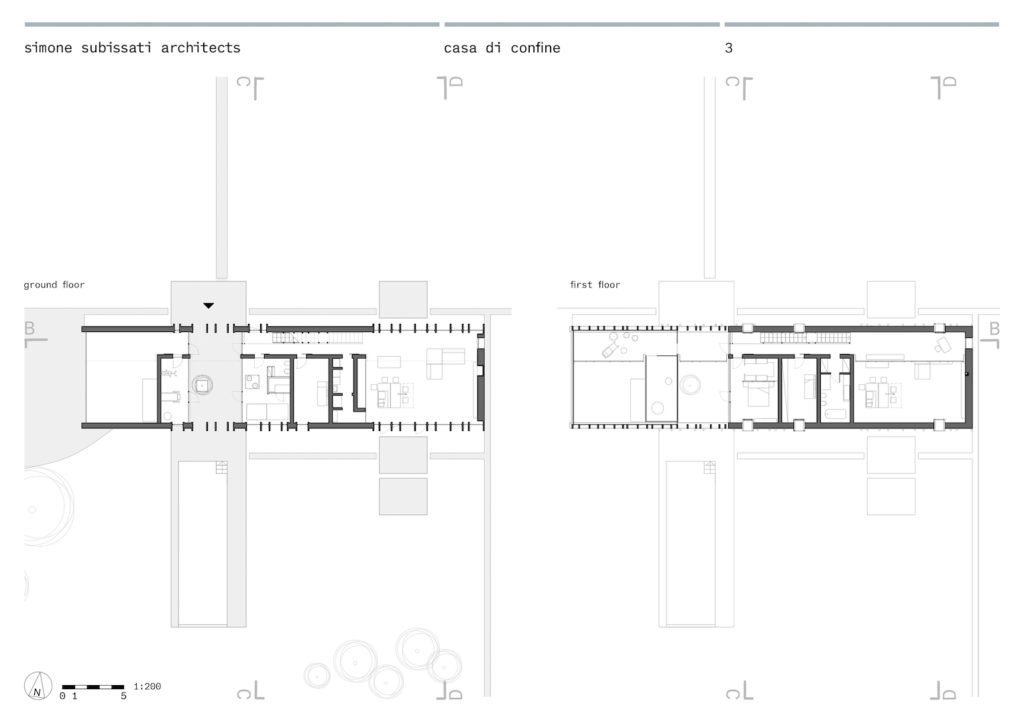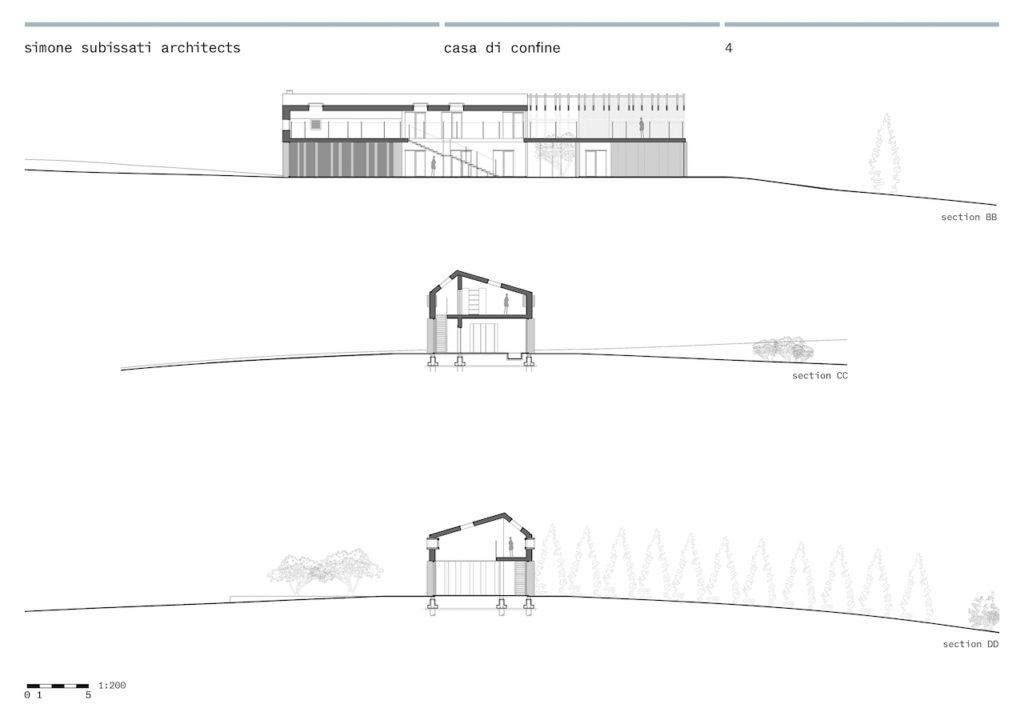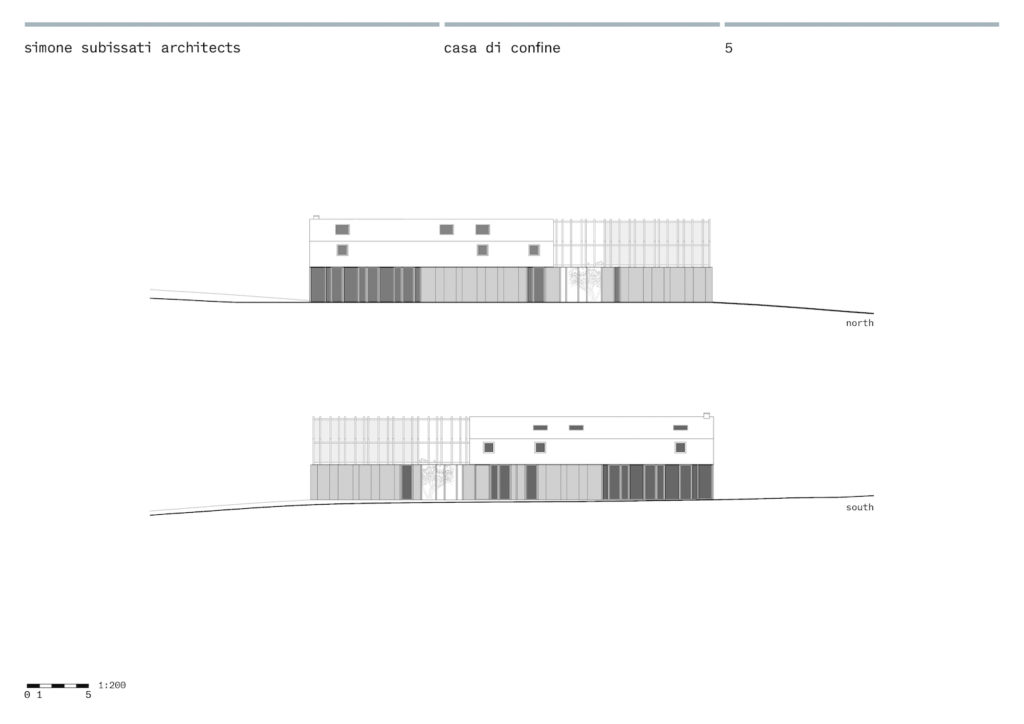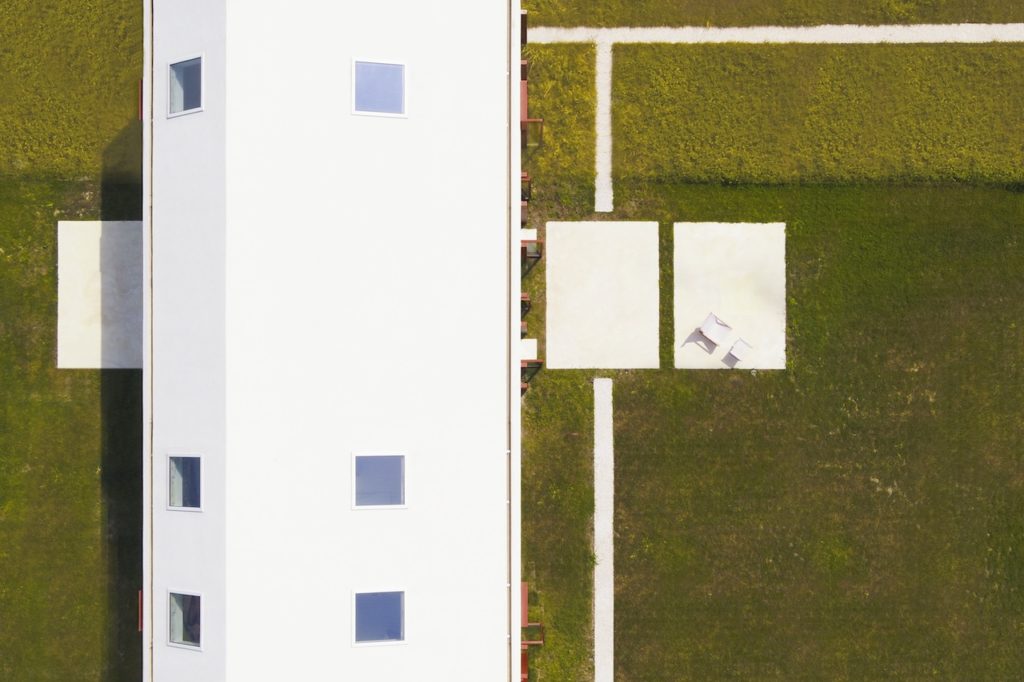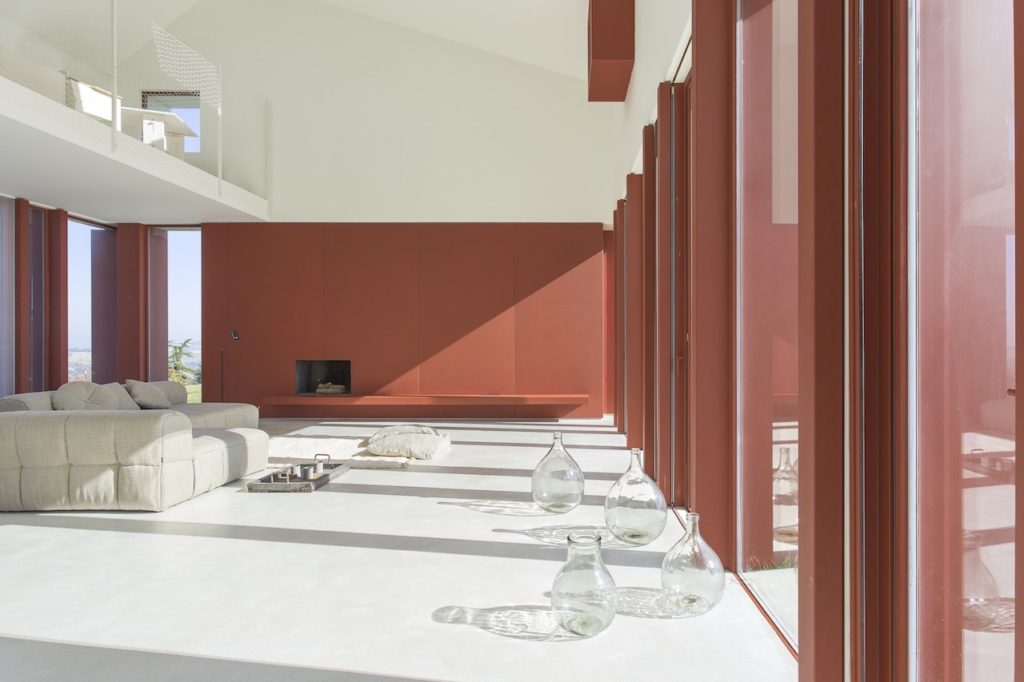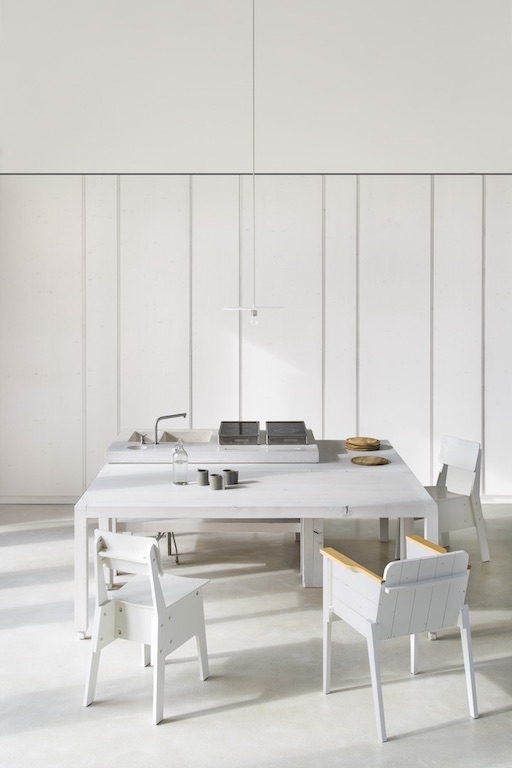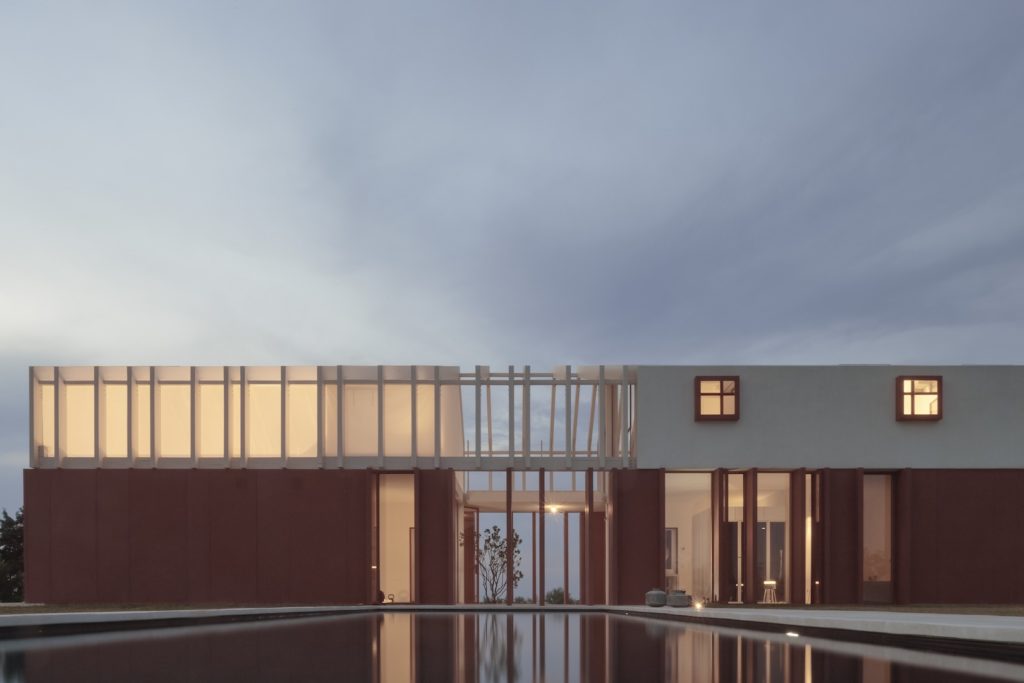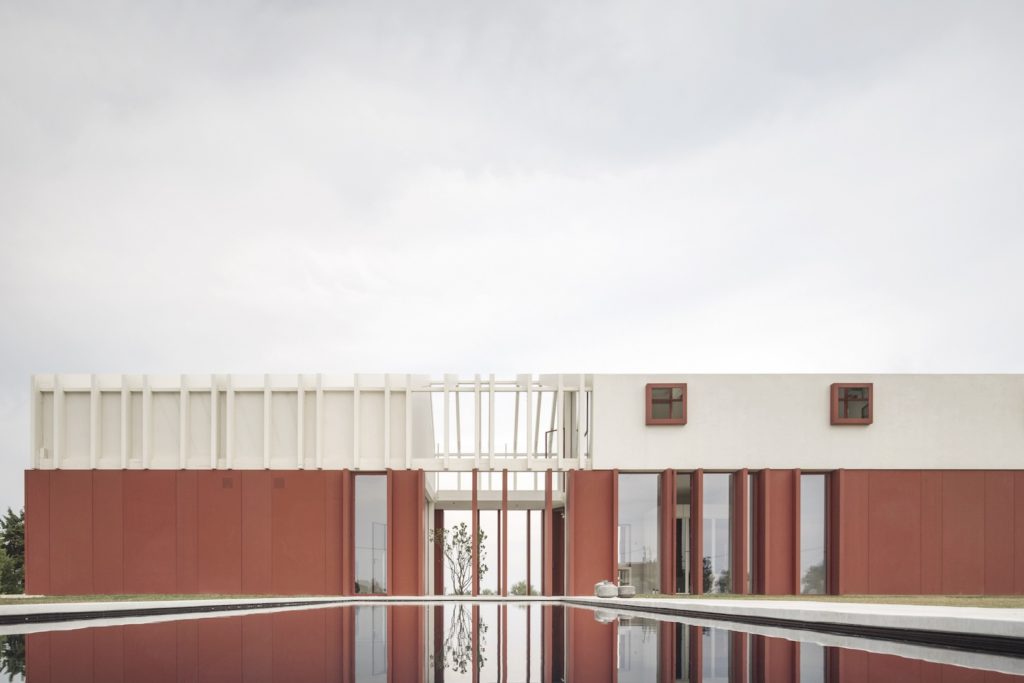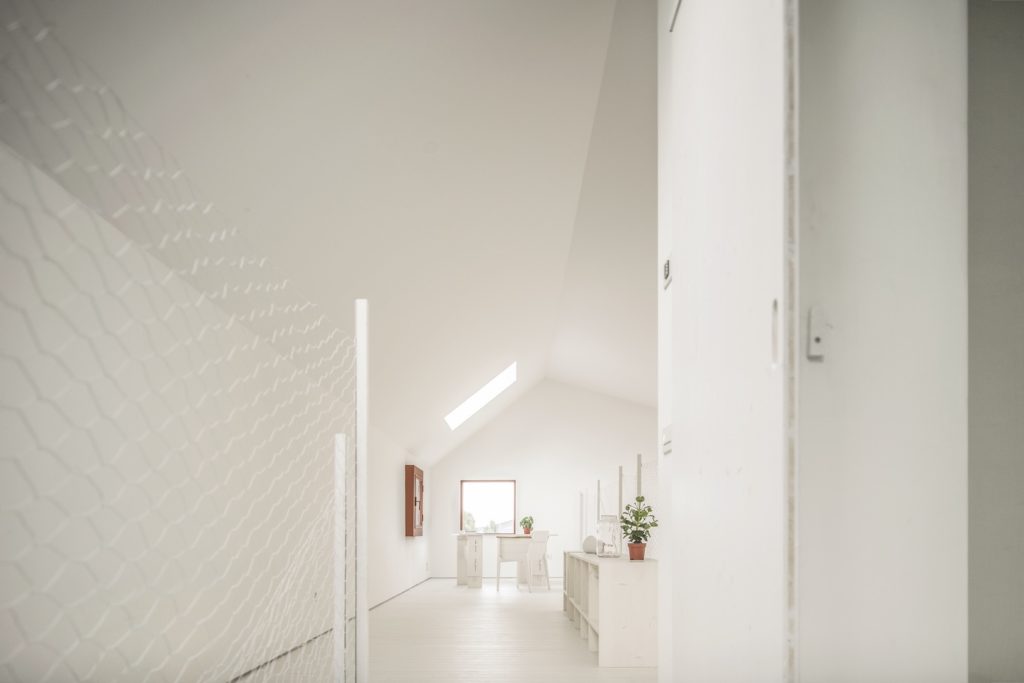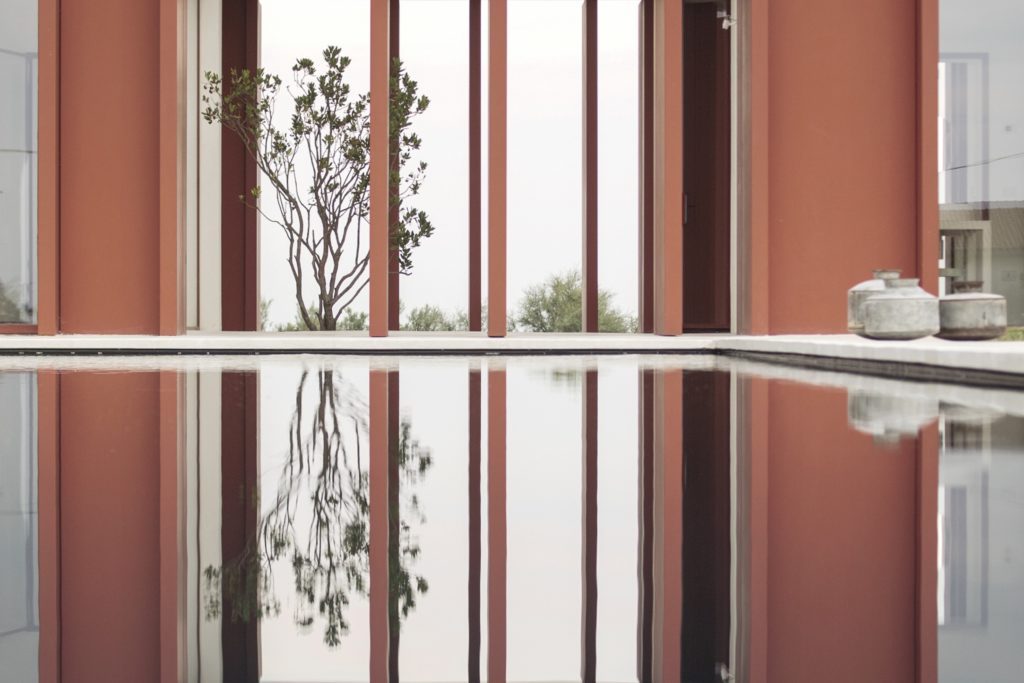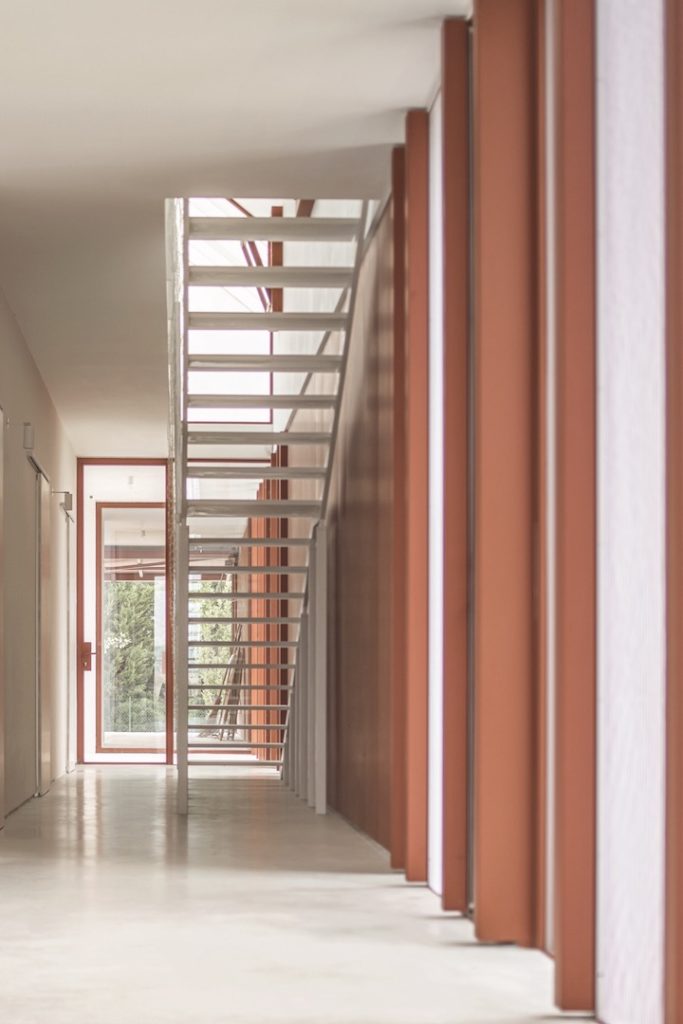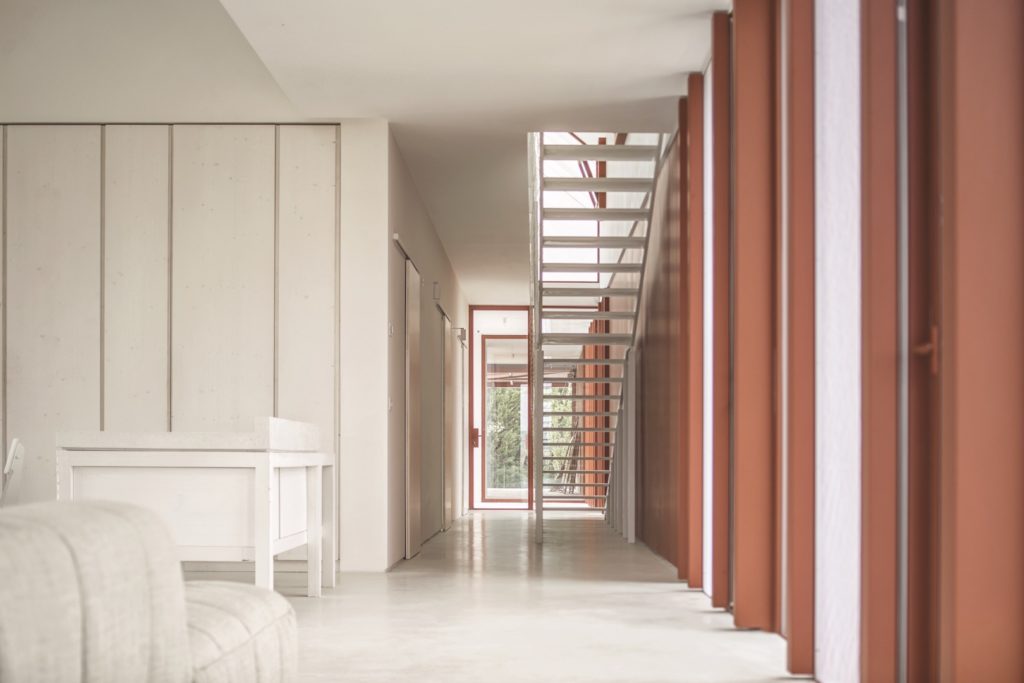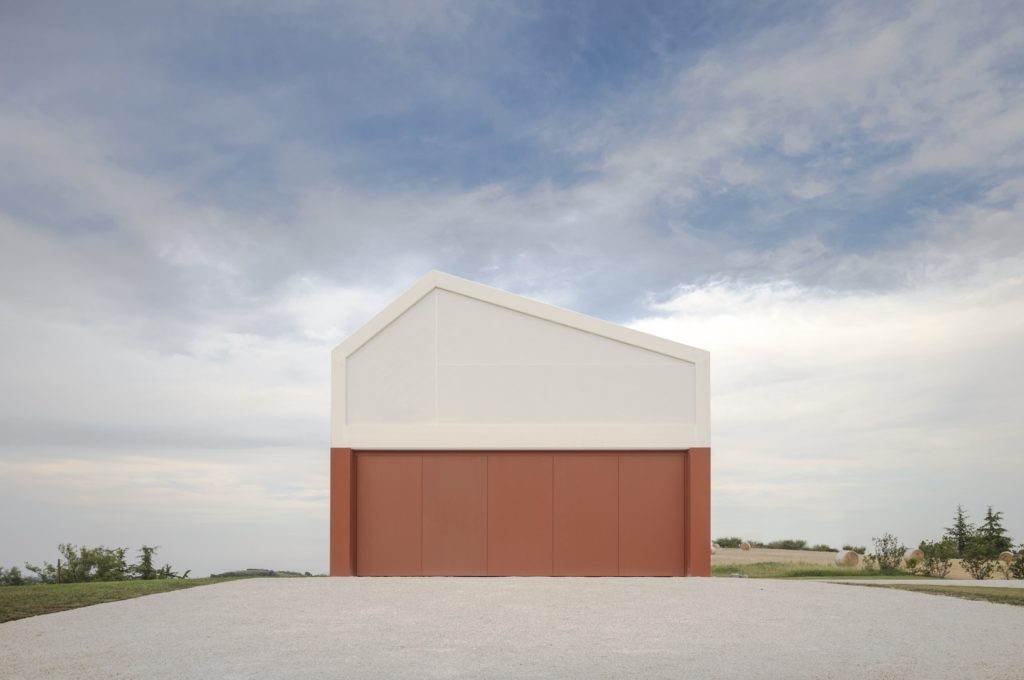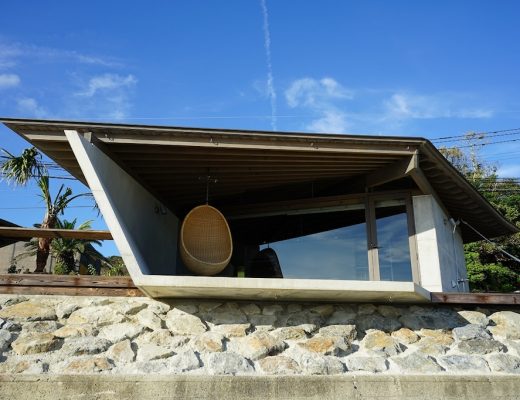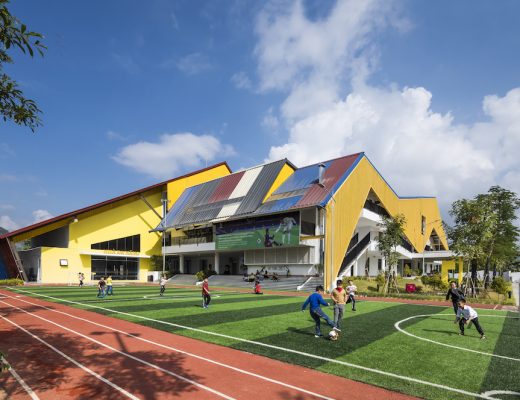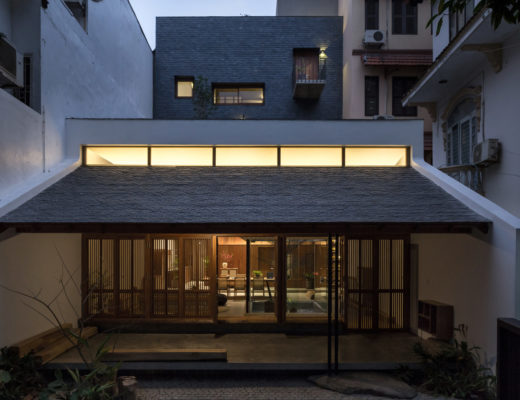Designed by Simone Subissati in Polverigi, in the province of Ancona, Italy, Casa di Confine or Border Crossing House reflects the architect’s personal interpretation of a particular geographical condition that characterises the Italian landscape and that, according to Subissati, can be a starting point to rethink the margin, necessary and unresolved, between urban fabric and countryside.
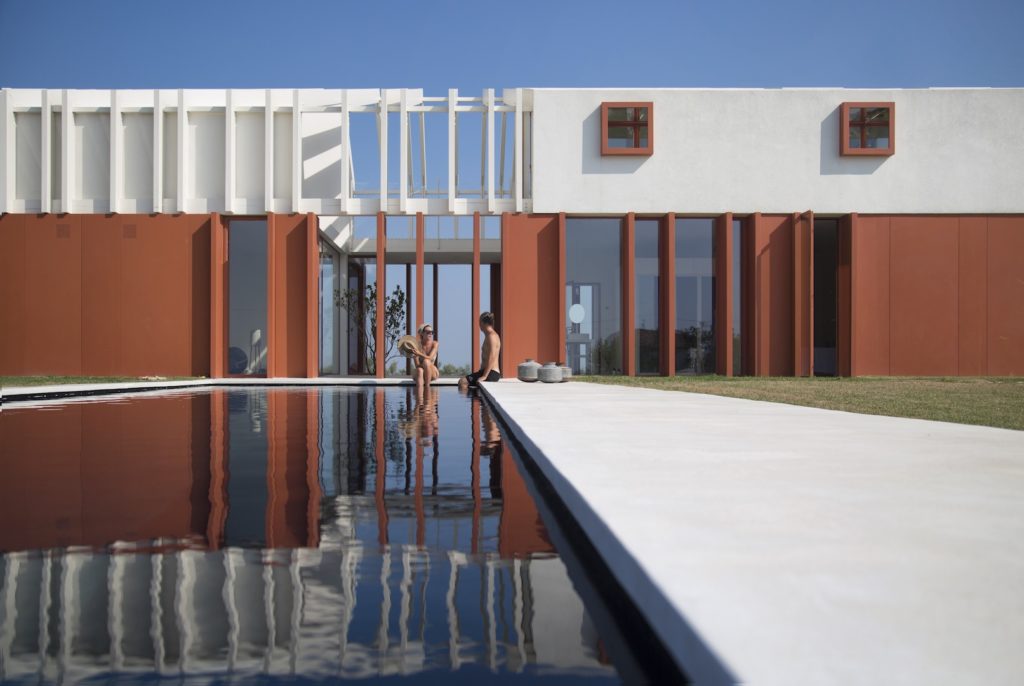

Built on the gentle hills of the Marche region, near the Adriatic coast and beyond the Sibillini mountains, this house was born from a careful study of the environment and a strong determination to interpret the idea of continuity and permeability that nature often suggests. Subissati, who is also a talented photographer, has been exploring the territory of his region for some time in his quest to reflect on the built environment. He has often lingered to observe the landscapes that one encounters when crossing the Apennine backcountry of central Italy, as one approaches the coast. His photographic project is called “Interiors of Resilient Communities”.
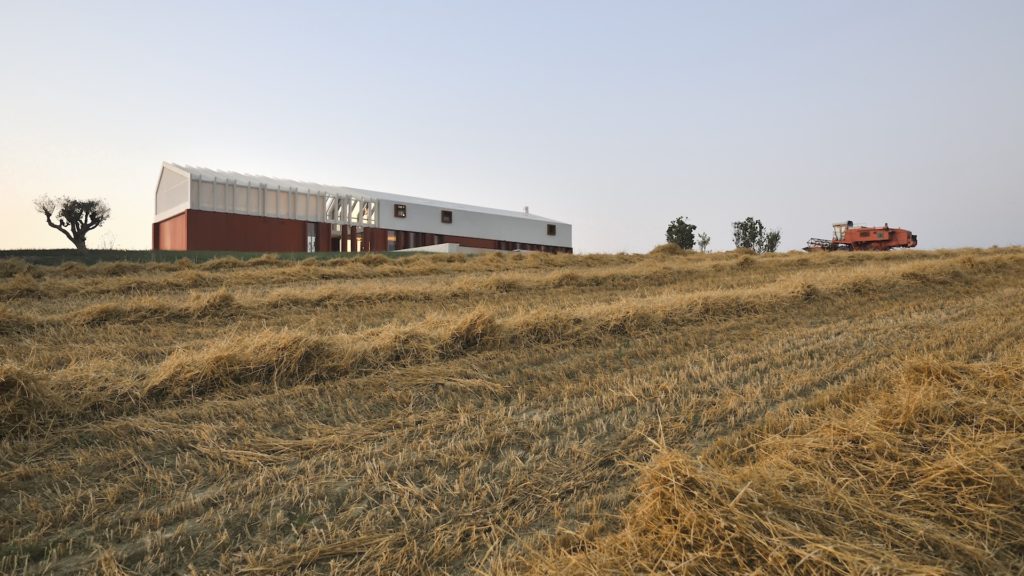
The Border Crossing House is located in the landscape at the edge of the built environment, on the edge of the fields, where the city is no longer a city but it is not yet open countryside. The project is conceived as an ecotone, which is an element able to interpret the transition between living space and productive, agricultural space.
The rectangular building, covered by an asymmetrical double-pitched roof, runs from east to west, in close relation with the surrounding cultivated land. The presence of numerous openings, different in shape and function, turns the house into a sort of device that connects the hilly landscape with the intimate, domestic space. No fences guard the Border Crossing House: grass reaches the very edge of the house. A strip of decorative perennial grasses ideally envelopes the house, as if it belonged to the fields (cultivated with wheat, barley, field beans, sunflower). Both inside and outside, the house appears rather unusual. The spaces and the forms do not follow a typological model nor the most conventional spatial arrangement, but are hybrid devices that suggest unexpected ways of living.
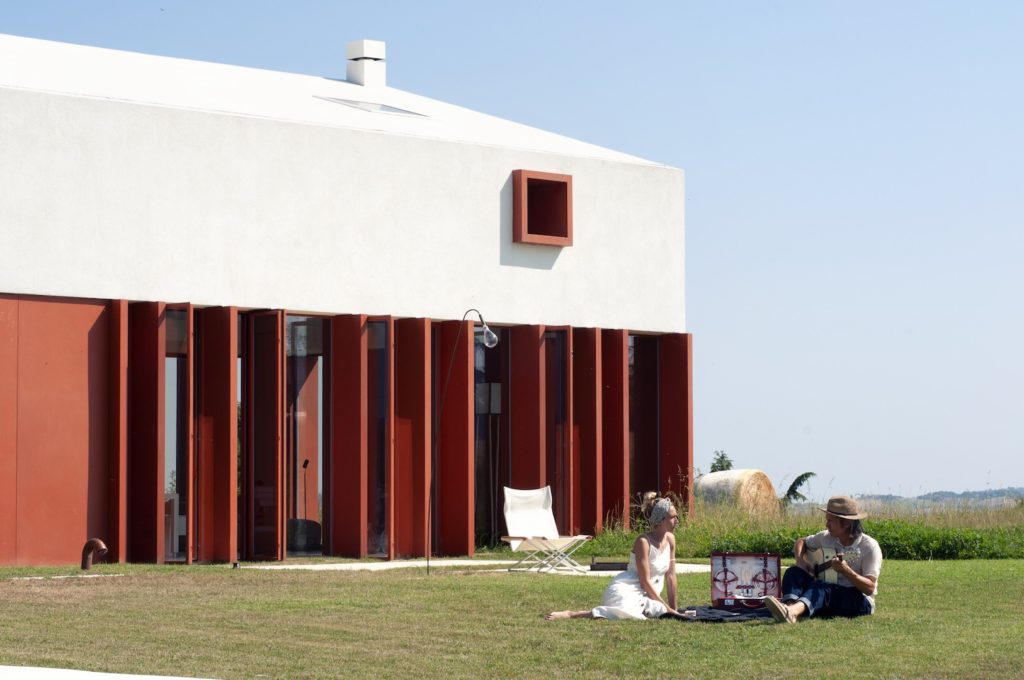
A private space without fences or barriers, a reaction to the temptation to close oneself off in response to a desire for protection and privacy that in the contemporary world tends to appear paradoxical. Yet privatisation is a persistent phenomenon that, together with the relentless consumption of land, continues to limit and compromise the presence of one of the most important resources on the Italian territory.
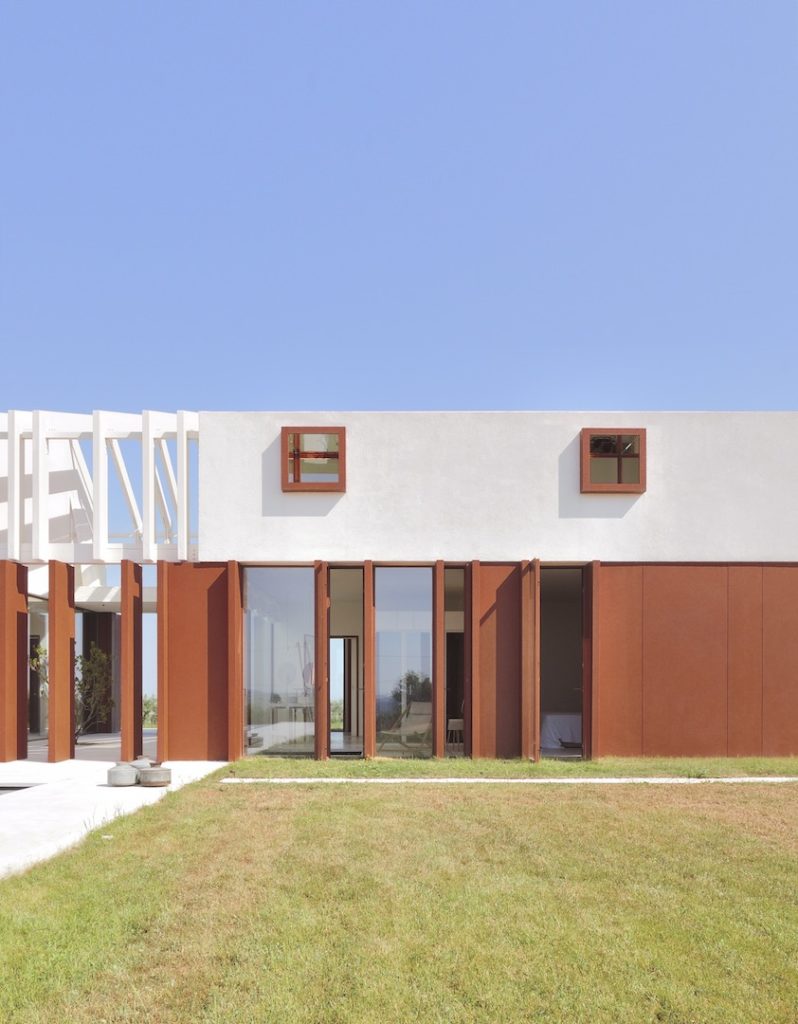
Educated at the School of Architecture in Florence, a student of Remo Buti and Gianni Pettena, Subissati built a house that recovers the essential orthography of local rural houses, while evoking the experimentations of some of the protagonists of the Italian radical avant-garde. The Border Crossing House has received wide international attention. Italian director Federica Biondi interpreted the work in the short film “Rustico”, in which she tells the story and the poetics of the Border Crossing House and explores its unique luxury, one that does not rely on opulence and ostentation, but on space, freedom and flexibility of use.
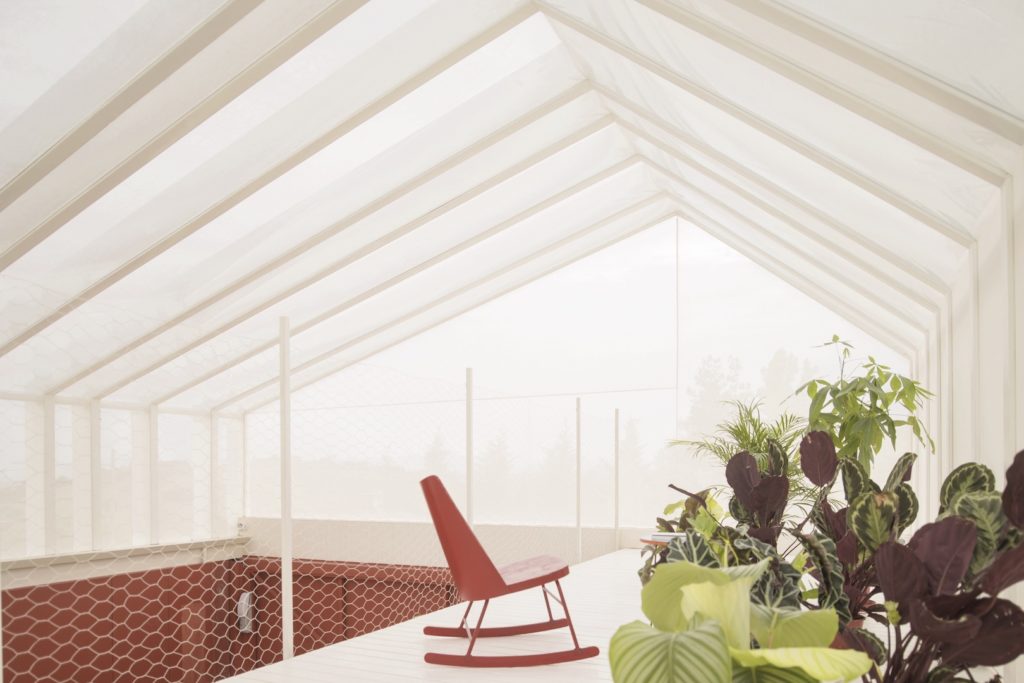
The rectangular building, covered by an asymmetrical double-pitched roof, runs from east to west, in close relation with the surrounding cultivated land. The presence of numerous openings, different in shape and function, turns the house into a sort of device that connects the hilly landscape with the intimate, domestic space.
The Border Crossing House designed by Subissati is the outcome of a reflection on inhabited space seen as a threshold: the house relies upon its relationship with the outdoors, intended as a territory extended to the extreme of one’s gaze.
No fences guard the Border Crossing House. It is located at the edge of the town of Polverigi, where cultivated fields are. Grass reaches the very edge of the house, which is surrounded only by a thin pavement.

“The idea was to overflow, to break the boundaries, without following conventions whereby the private living space is separated from the agricultural workspace,” notes Subisatti.
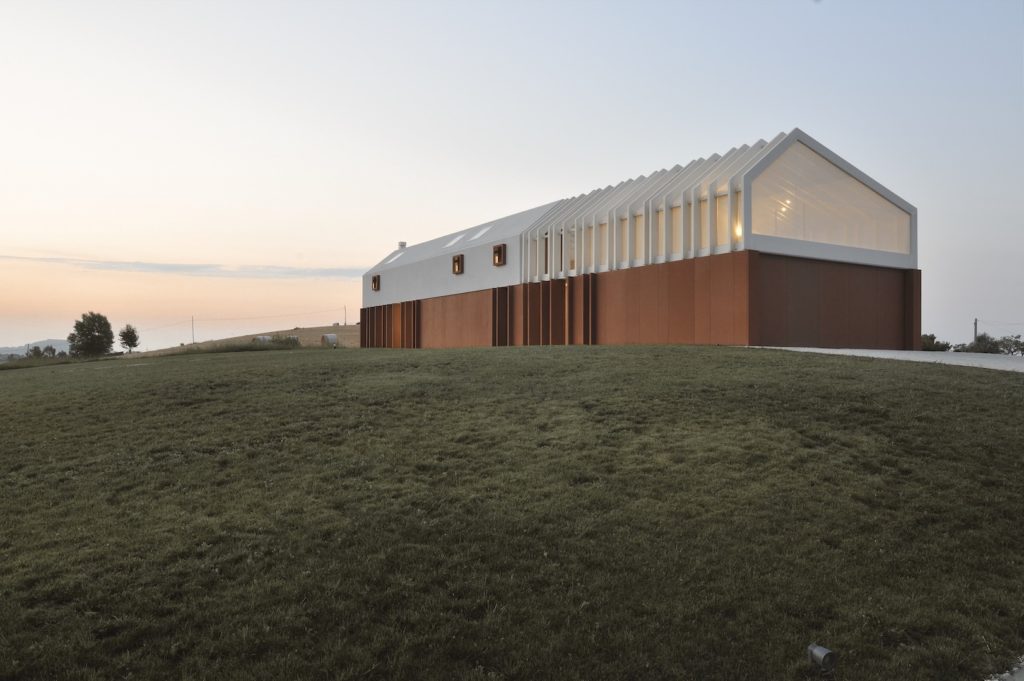
The ground floor, dedicated to the living area, is characterised by the presence of a deep red coating (the main body is made of iron painted with an anti-rust primer). The upper floor, in addition to housing the bedrooms, also includes a large open space contained by a light frame covered with a micro-perforated and pre-tensioned membrane. It distinguishes itself by the colour white and it gets completely illuminated at night.
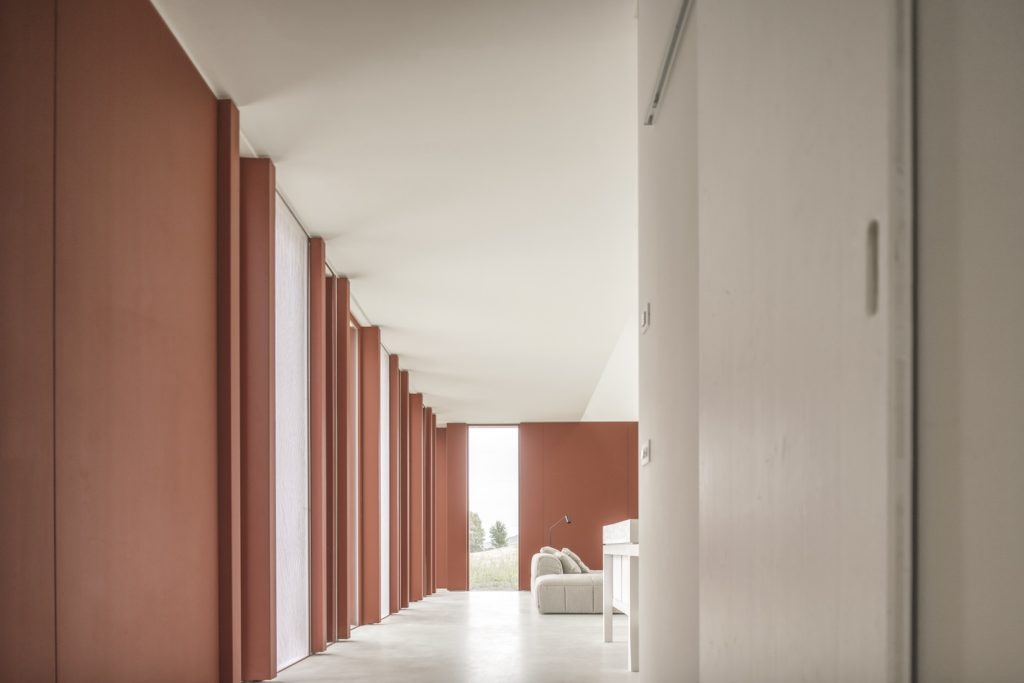
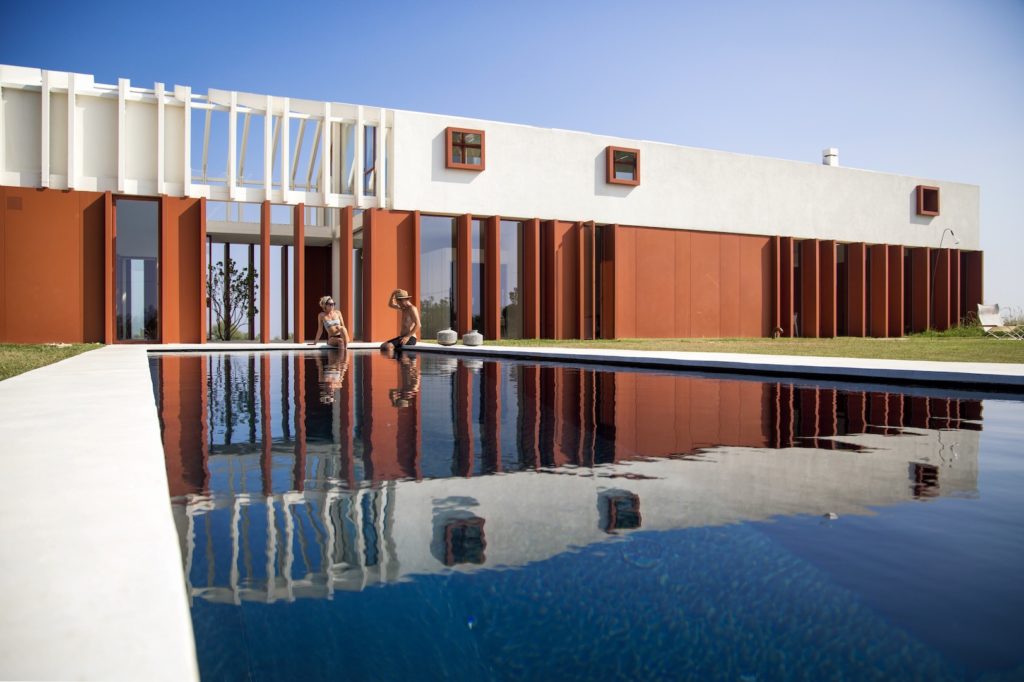
A large central portion of the volume is left open on the ground floor and can be crossed from side to side. In addition to this opening in the building, large sections of the metal enclosure easily turn into apertures, thanks to the windows, which, when opened, are orthogonal to the facade. This allows the living room, kitchen and spa to establish a direct relation with the outside space. Thanks to these spatial arrangement, the volume of the building appears almost to be hovering over the ground. This perception is also enhanced by the presence of the swimming pool, placed perpendicular to the house and surrounded by grass, reminiscent of the water-collection tanks used for irrigation.
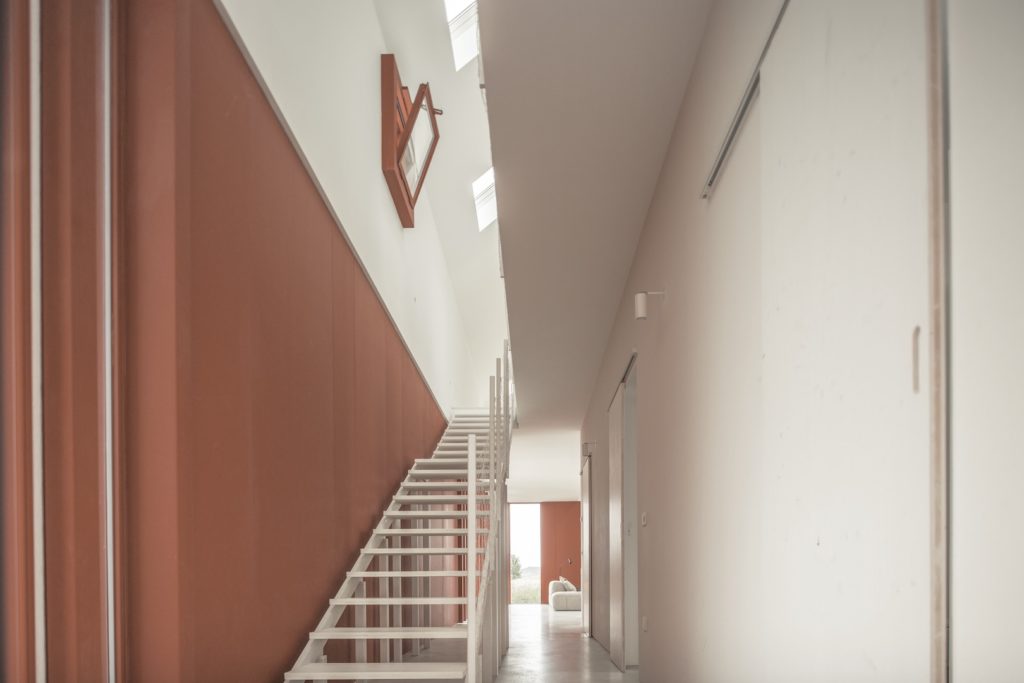
The upper floor is accessed by a wooden staircase with an elementary structure, painted white. From it, one accesses the most private area of the house, where bedrooms are hosted. For the rooms, instead of simple windows, Subissati designs visual devices, which he calls “diaphragms.”
As on the ground floor, windows here also allow one to contemplate both sides of the landscape. Although very small in size, these openings have been designed to create surprising optical effects. A play of mirrors, arranged to completely cover the side openings of the windows, multiplies the views of the surrounding landscape. Protected by a simple chicken coop net, a balcony leads to a space where the winter garden and a second living room are hosted. This section of the building is made of wood and covered with a micro-perforated membrane that during the day allows natural light to filter inside the house and at night turns the Border Crossing House into a sort of large lamp.

“I was fascinated by the rural houses of my grandparents and relatives in the Marche countryside, characterised by a straightforward simplicity, a true essentiality that is very different from today’s trendy poeticness of minimalism,” reflects Subisatti. “They were houses that could be crossed from room to room, the workspace on the ground floor, connected and open on both sides.” However, Subissati avoids the temptation of looking at the house through the vernacular lens and remains committed to contemporaneity.
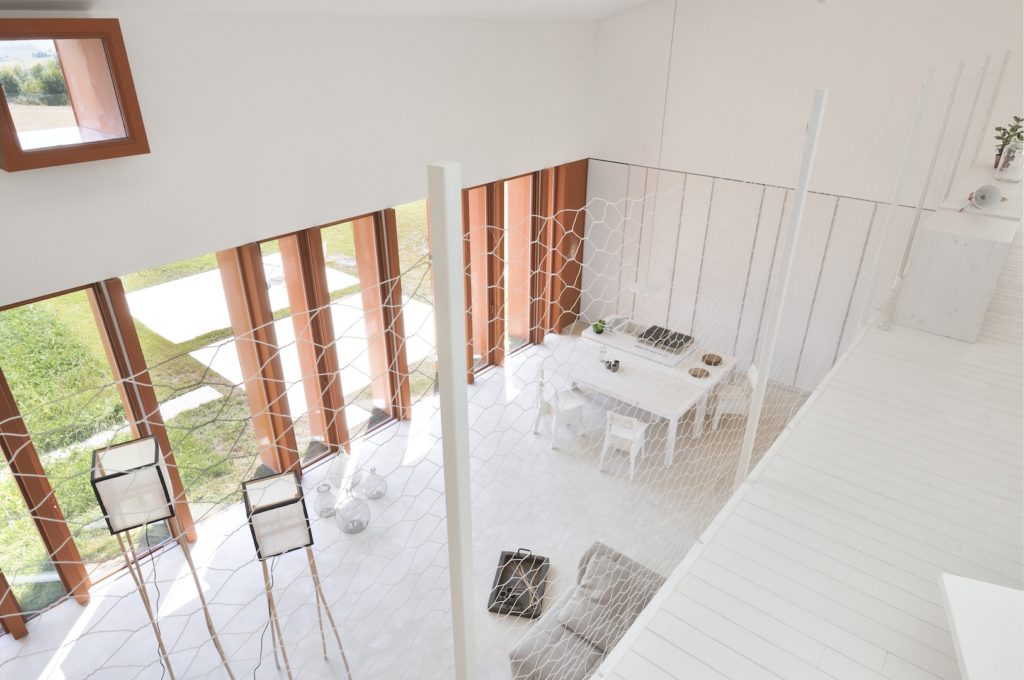
A playful attitude led Subissati to think of the project as an assembly process. In this sense, the Border Crossing House tends to become a metaphysical element, a sort of archetype of the rural house elaborated through a constant reference to ‘memory’ and ‘play’.
MATERIALS, FURNITURE, SUSTAINABILITY
Guided by a strong conceptual – rather than formal – inspiration, Subissati avoids any contemporary mannerism in his choice of materials and furnishings. The furniture is all custom designed by the architect himself as his aim was to create a space that would feel “both eternal and open towards the future.” His compositional alphabet describes a sense of openness and lightness, while also offering a sense of flexibility that involves the whole house from its spaces to the furniture.
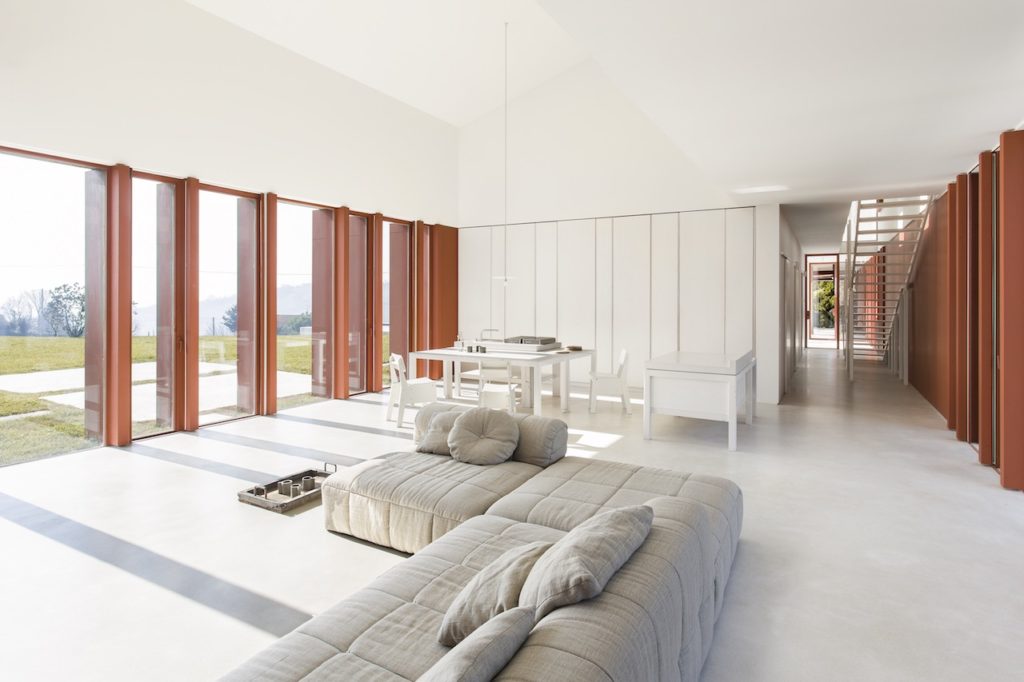
The structure of the building is made of steel, except for the volume on the upper floor, accommodating the open space, made of laminated wood and covered with micro-perforated metal sheets. The remaining part of the upper floor is finished with a self-cleaning plaster.
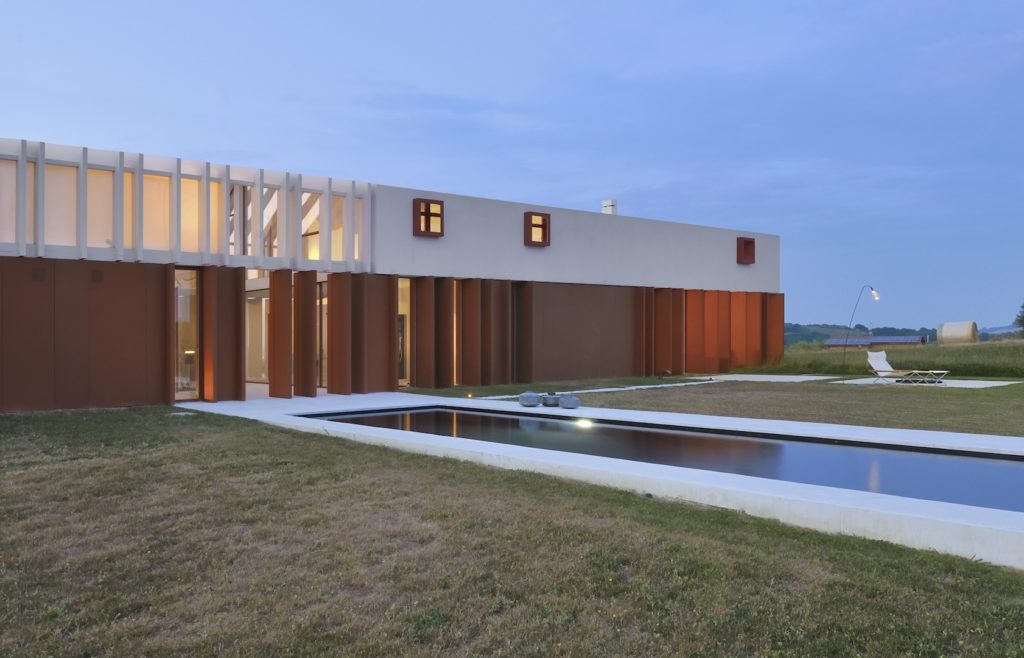
The pilasters from which the structure on the ground floor takes shape and to which the swings of the doors and of the windows are aligned, also accommodate drains and ventilation ducts. A rainwater collection network is connected with the underground tanks for water supply. The building responds to passive bioclimatic standards, as it allows a thermal gain in the cold months and a natural cooling in the warm months, thanks to cross-ventilation (no air-conditioning is provided) and the chimney effect.

“For the Border Crossing House, I imagined a space that would feel as if it was ‘inherited’,” says the architect. “I wanted it to be the least opulent it could be: it is meant to feel ‘as if it had always been there’ though being contemporary and in many ways very distant from tradition. So essential that you can almost think of it as a temporary place, as if it were an outdoor park. A light, flexible space that, as if it was there already, could now be reclaimed. A space without frills and without luxury, just like the buildings of the rural tradition where people both lived and worked.”
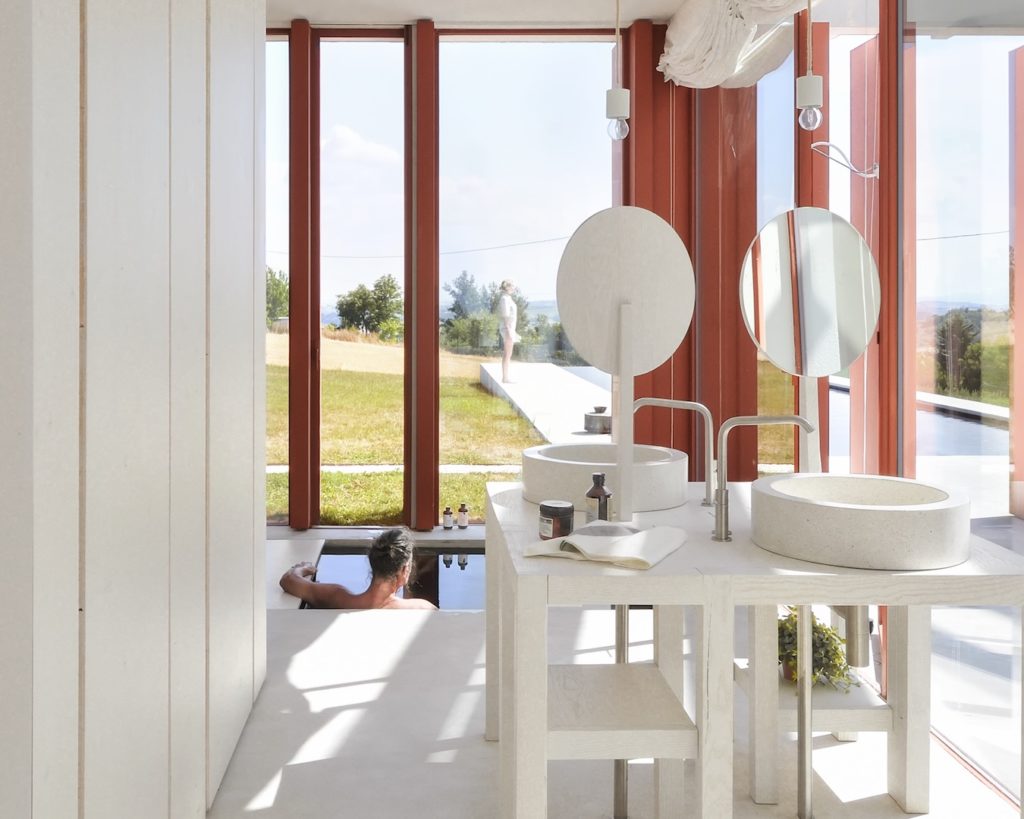
The furnishings are in solid ash wood, used with all its parts – bark, knots and splits – and dyed white. Or in pre-finished board panels of pine (for doors, doors and secondary partitions, such as the walk-in closet that also acts as bed headboard and bathroom / spa block on the ground floor). The kitchen countertops, the sink and the basins are custom made in cement and quartz, designed by the architect.
The Border Crossing House by Simone Subissati Architects is nominated for the 2022 European Union Prize for Contemporary Architecture – Mies van der Rohe Award.
Project details:
Name of the project: Casa di Confine / Border Crossing House
Location: Polverigi, Ancona, Italy
Architect and interior designer: Simone Subissati Architects
Project design team: Simone Subissati: designer architect Alice Cerigioni
Client: Doctor Carlo Zingaro
Structural and mechanical engineers: Domenico Lamura, Matteo Virgulti
Main contractor: Montagna costruzioni
Area: 4,337m2; built area: 350m2; dimensions: 33 meters x 8.4 meters
Schematic design and design development: 2014-2016
Groundbreaking: 2016
Completion of main structure: 2018; Completion of the project and landscape: April 2019
Photographers: Alessandro Magi Galluzzi, Roberto Piccinni, Rossano Ronci, Paolo Semprucci
See the full image gallery here:
You might also like:

